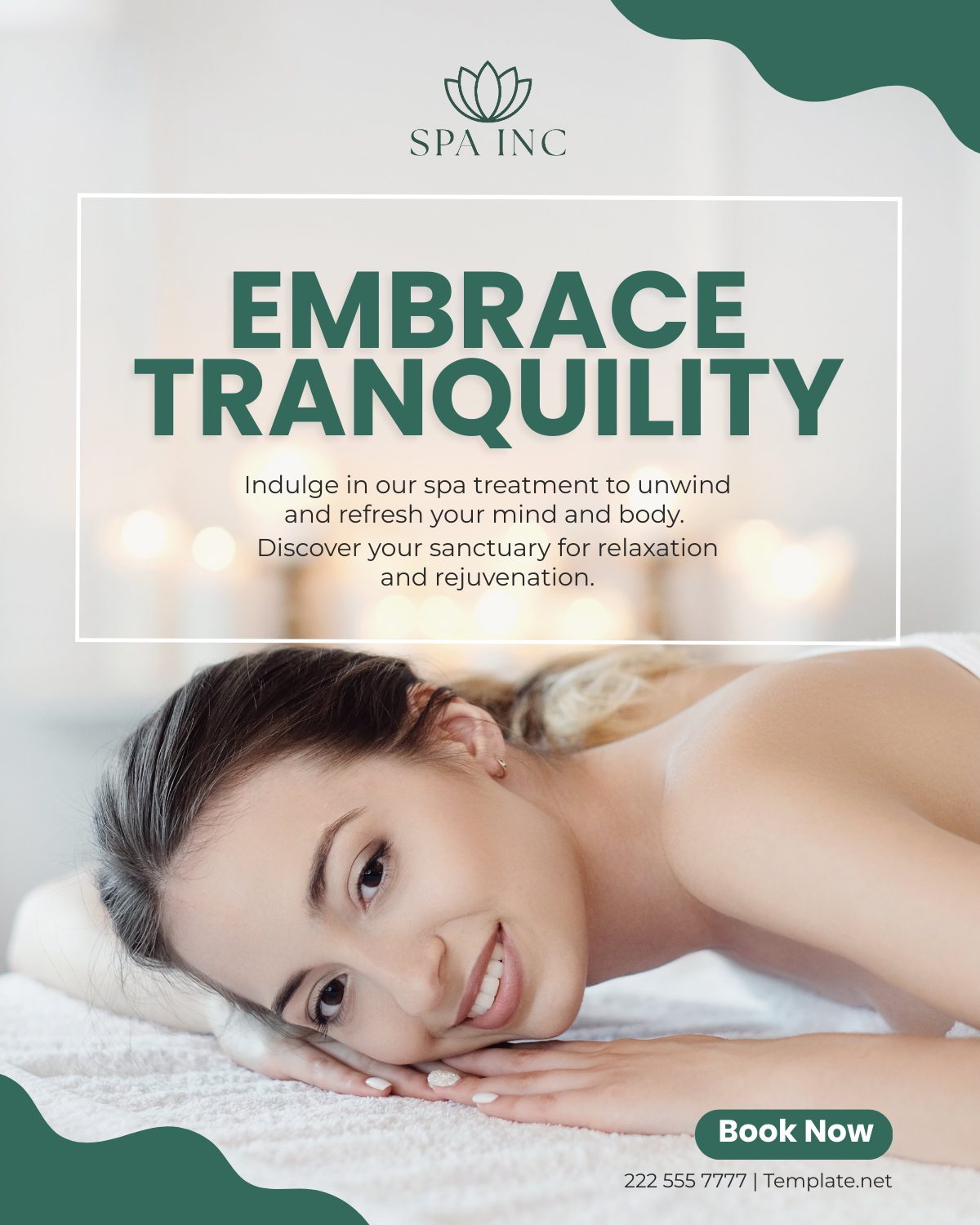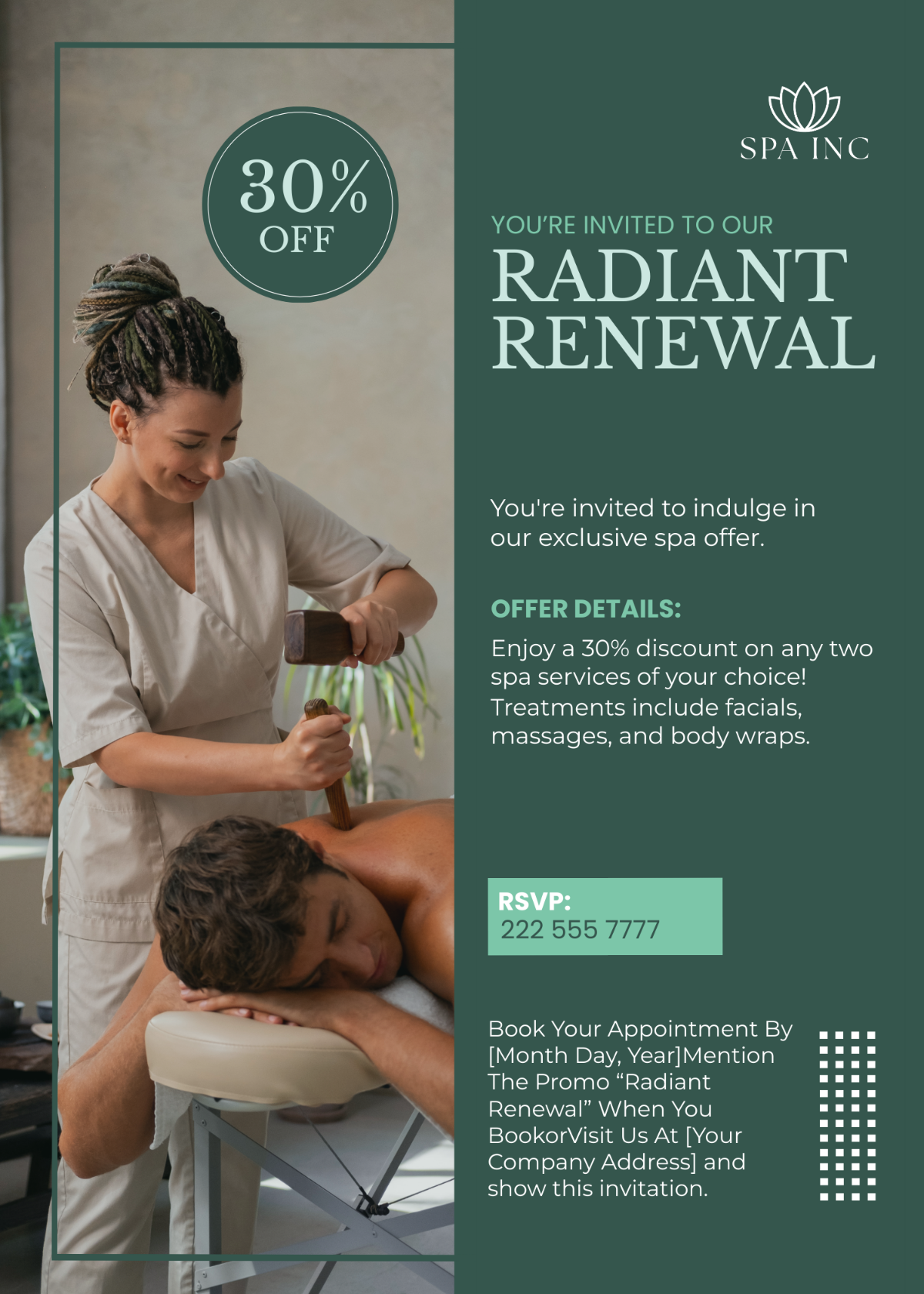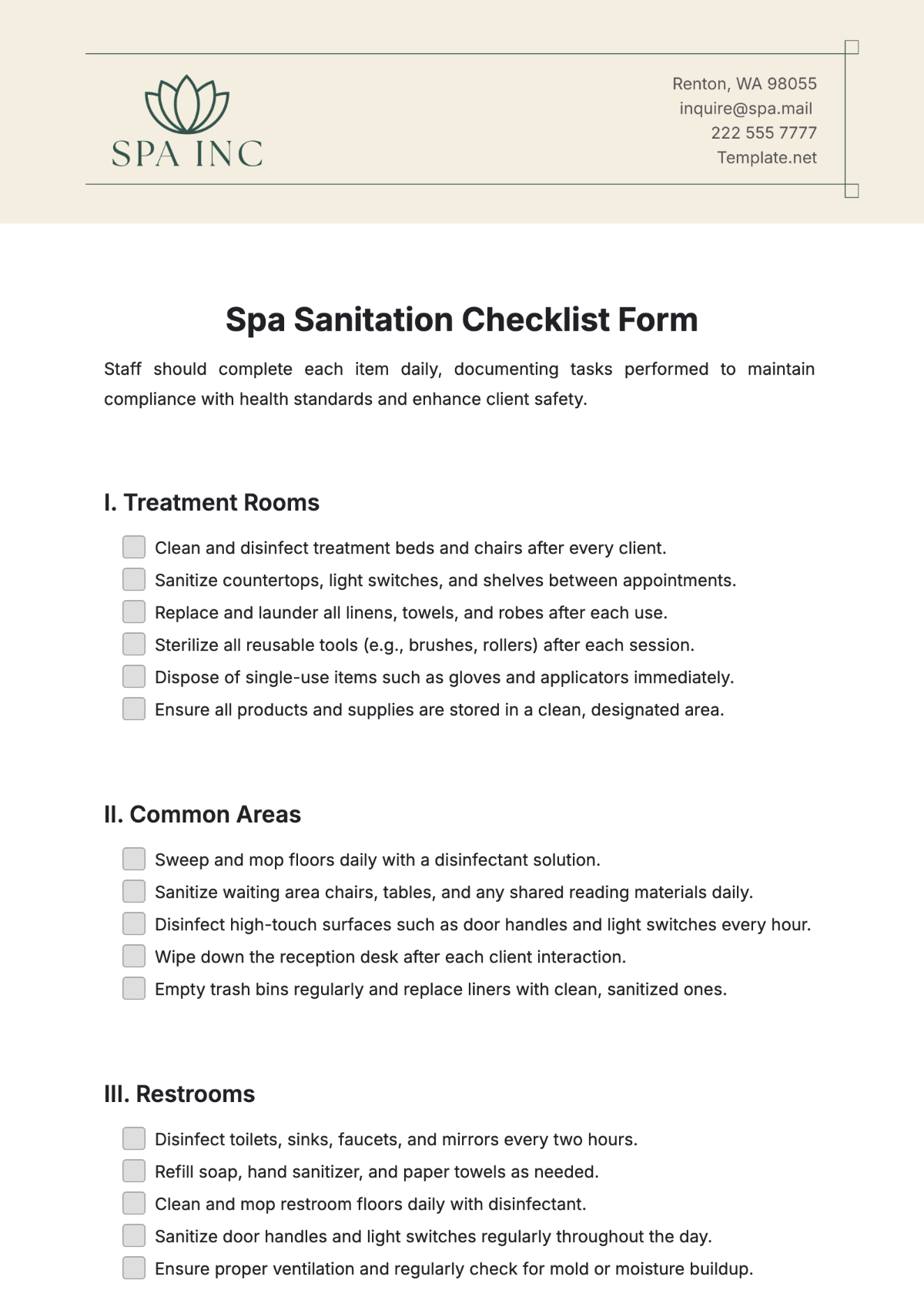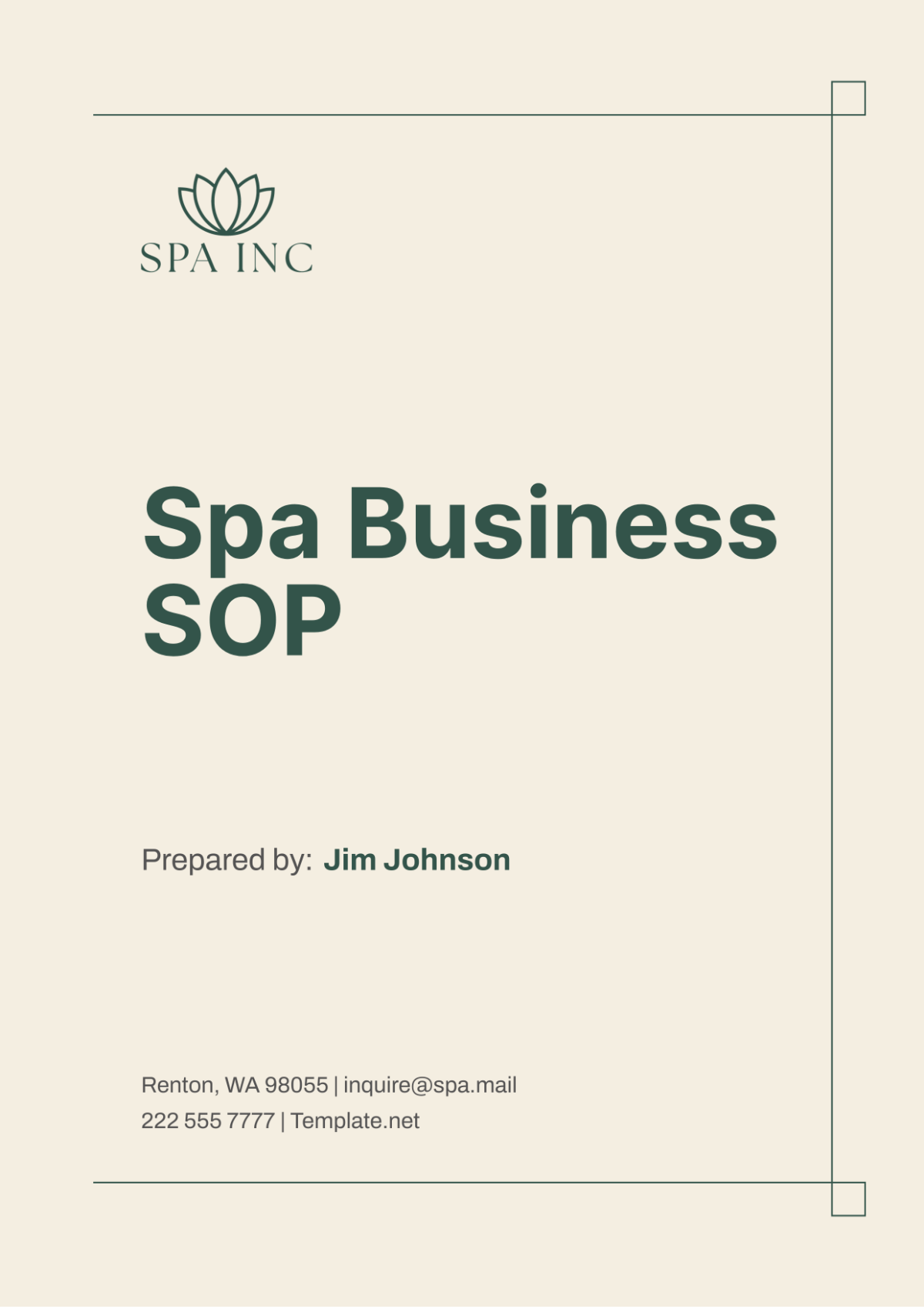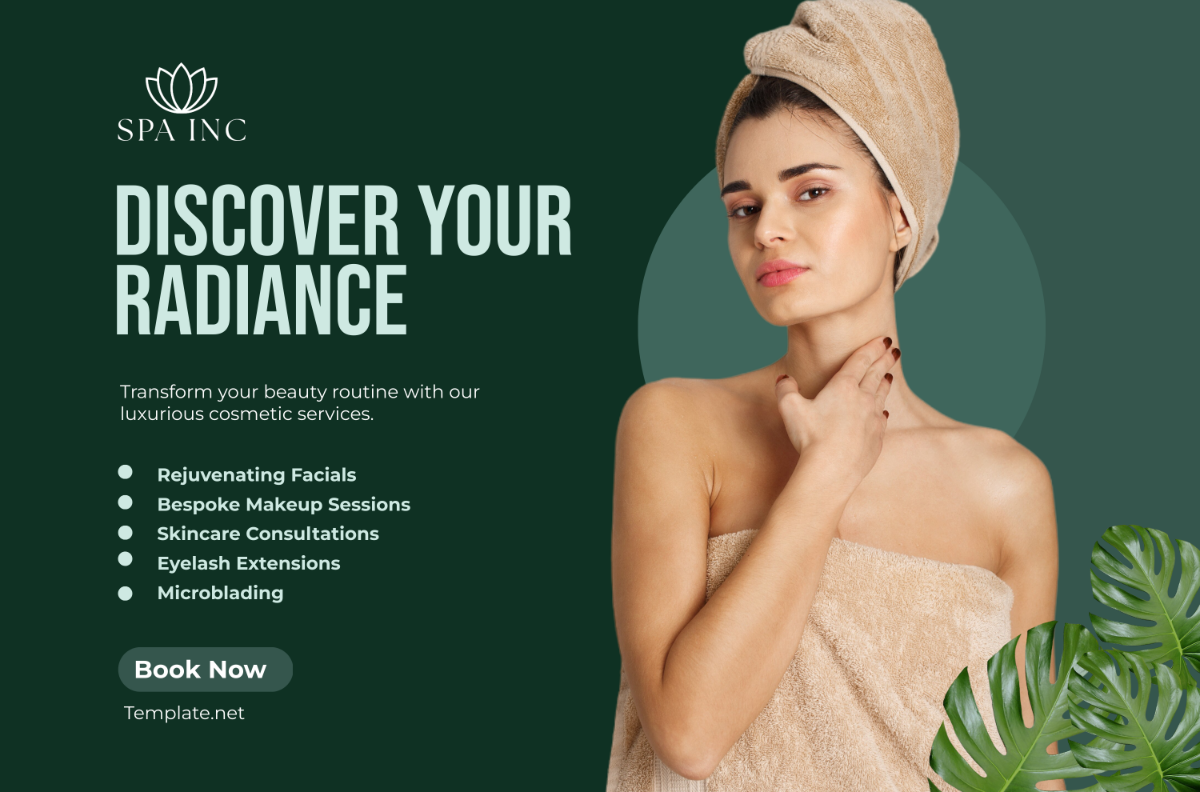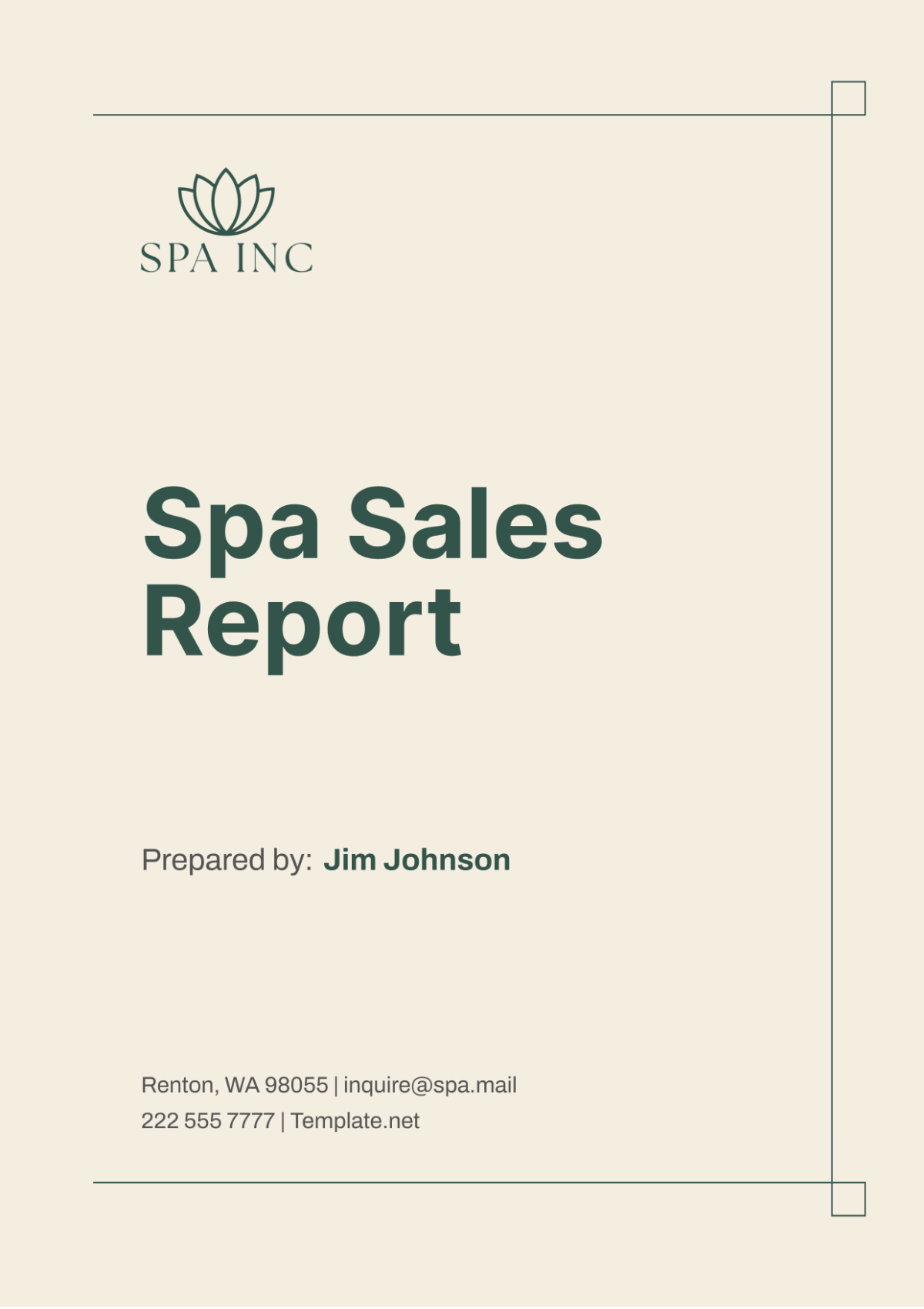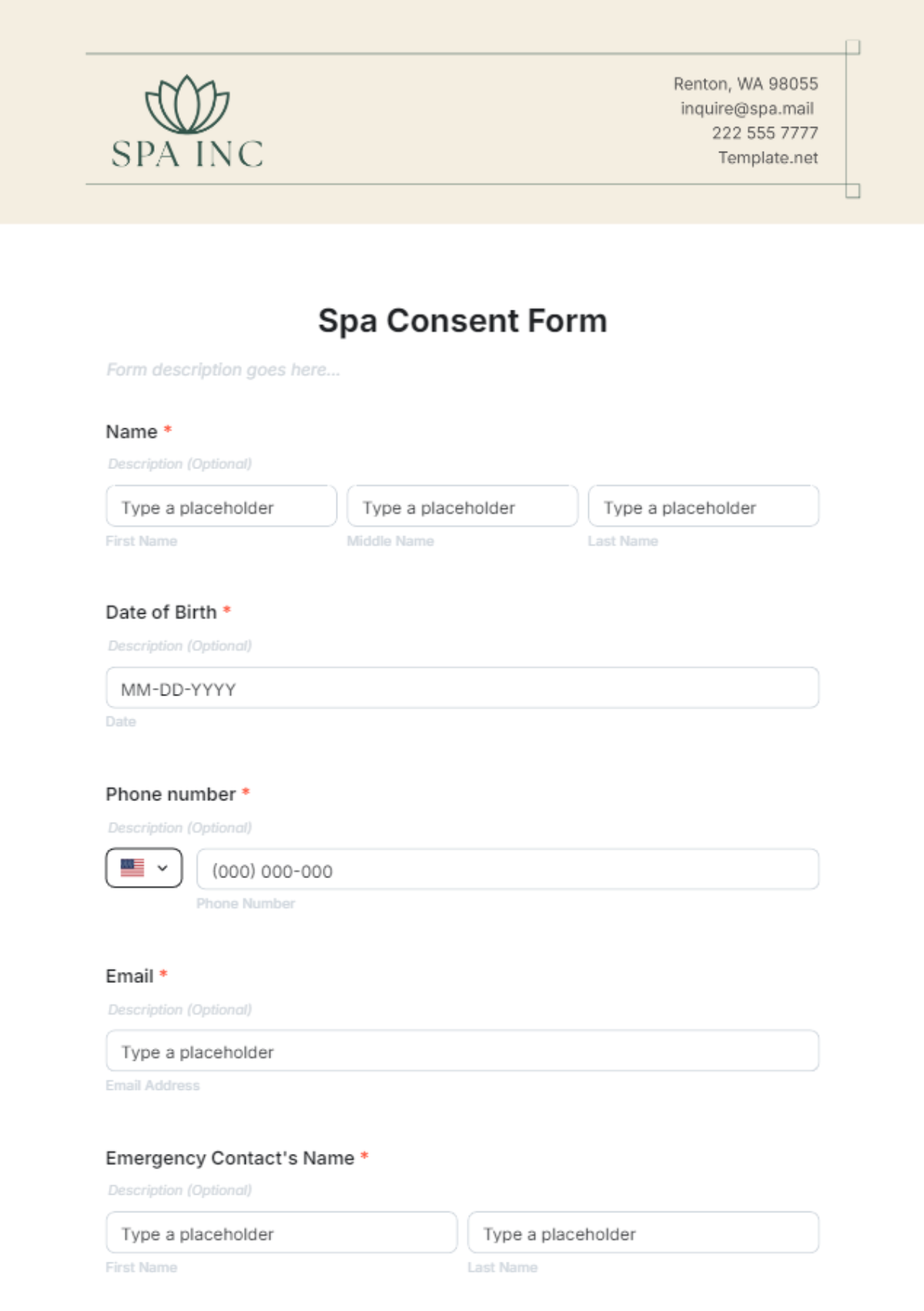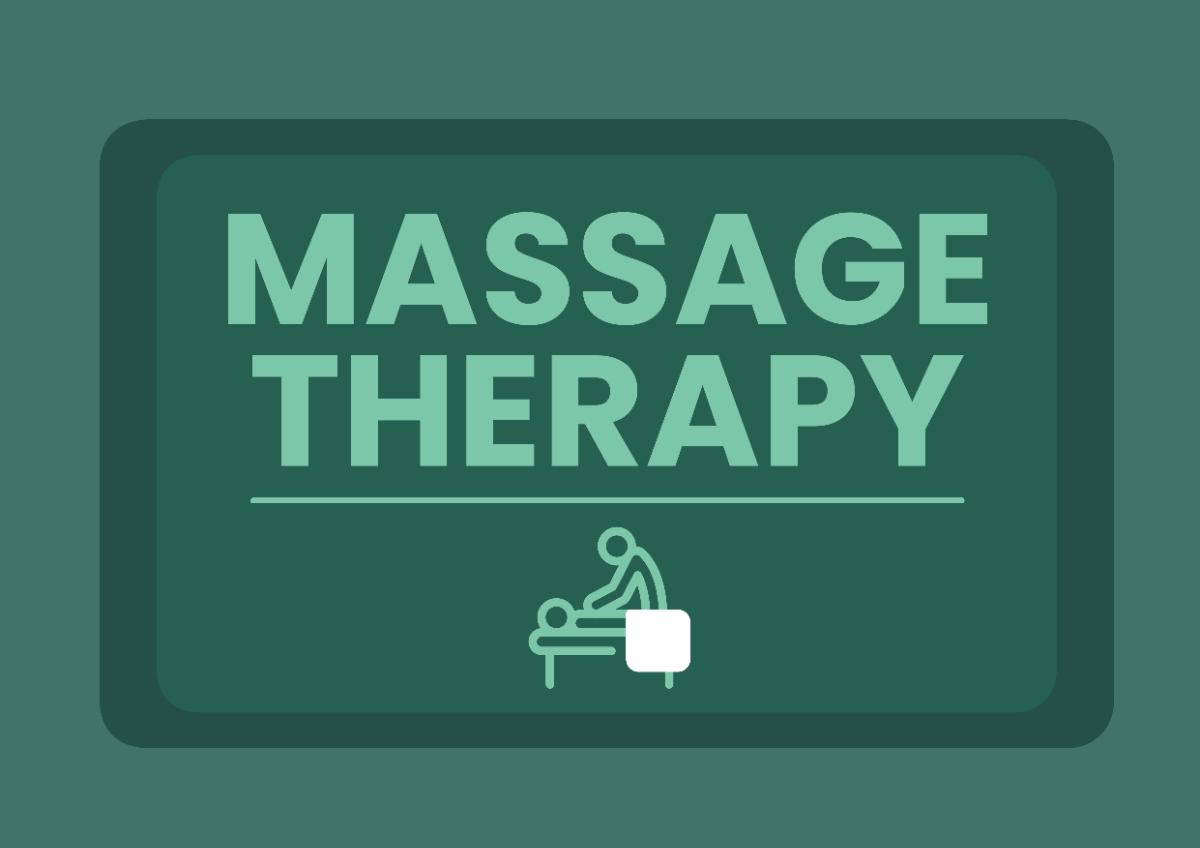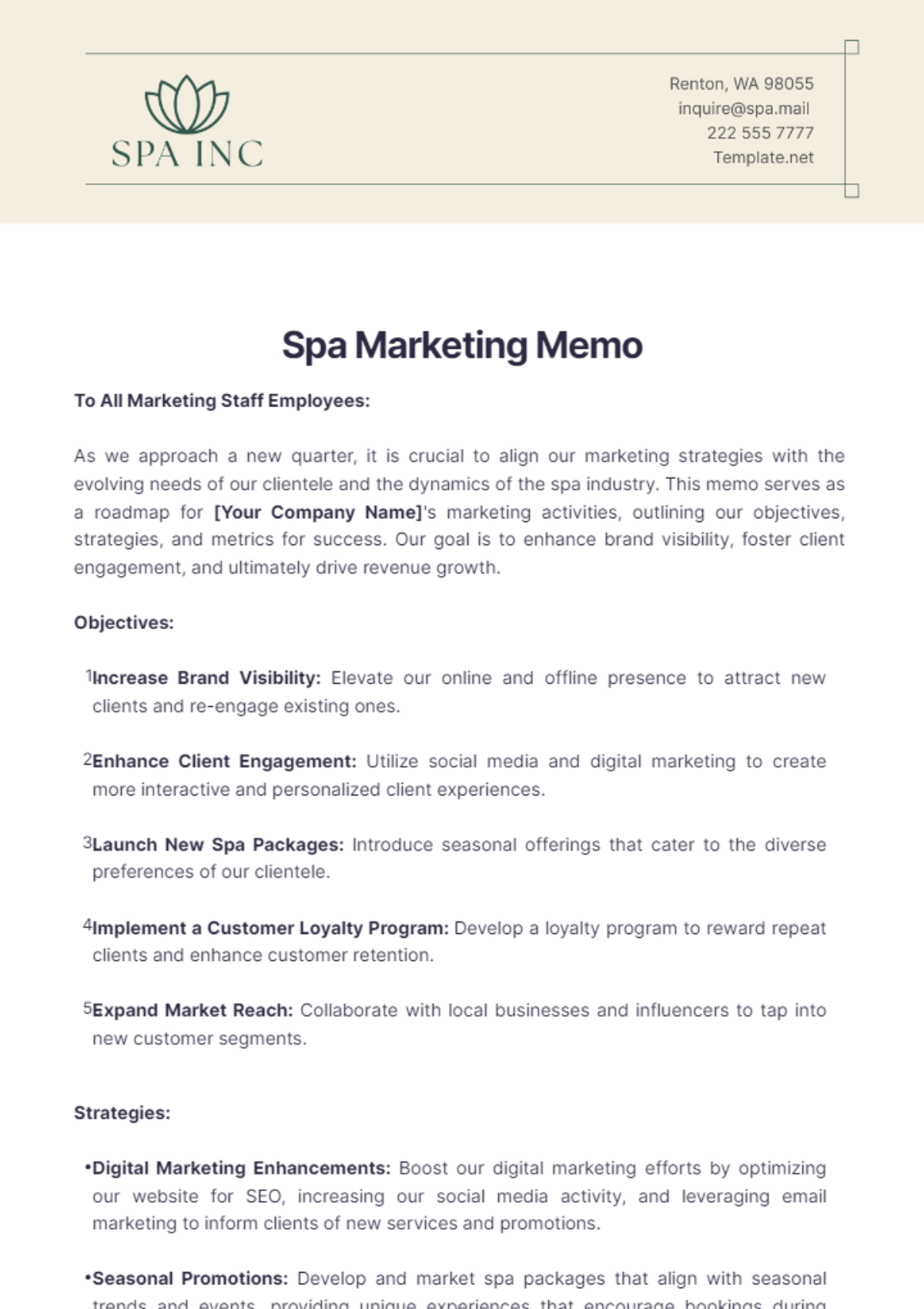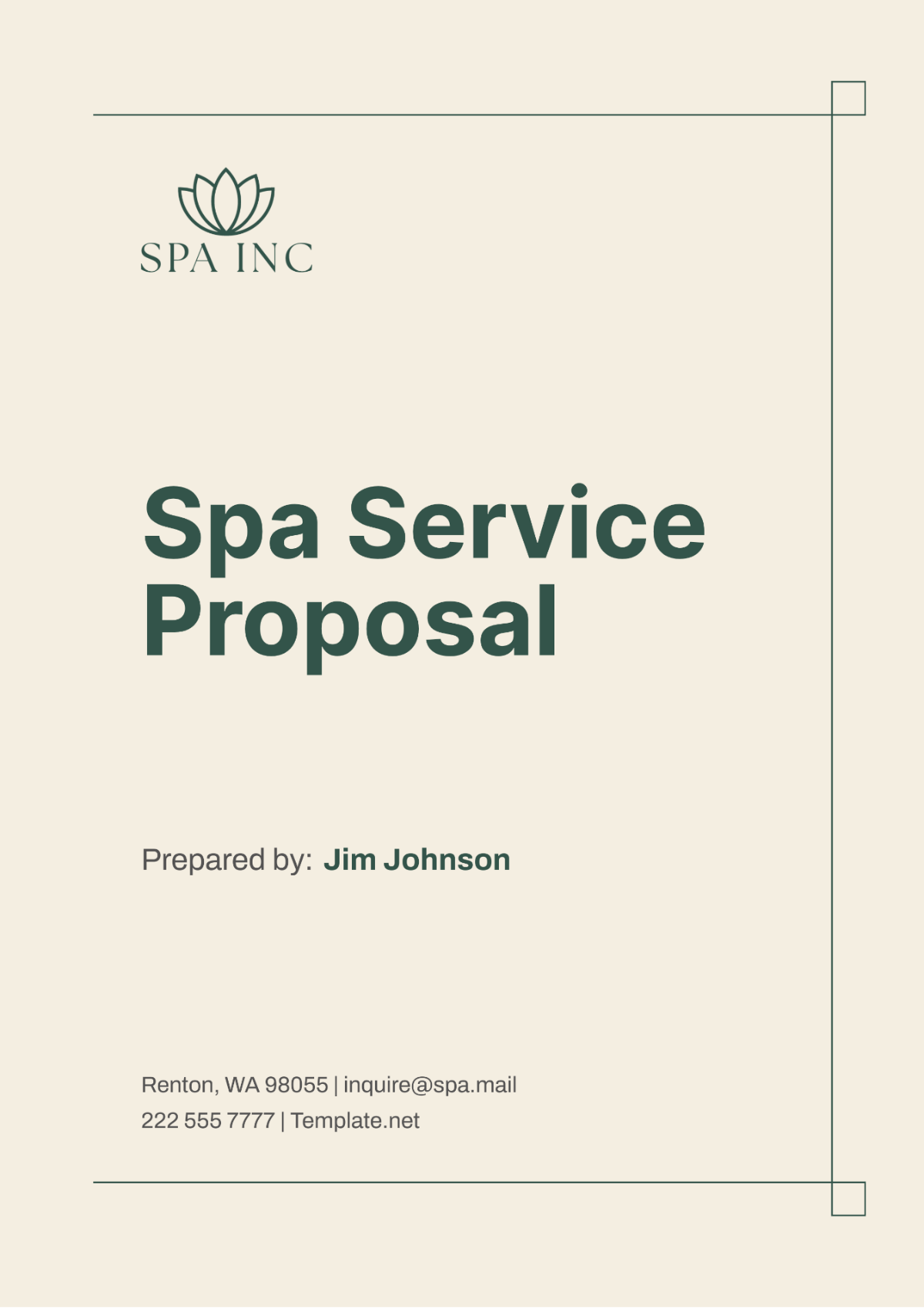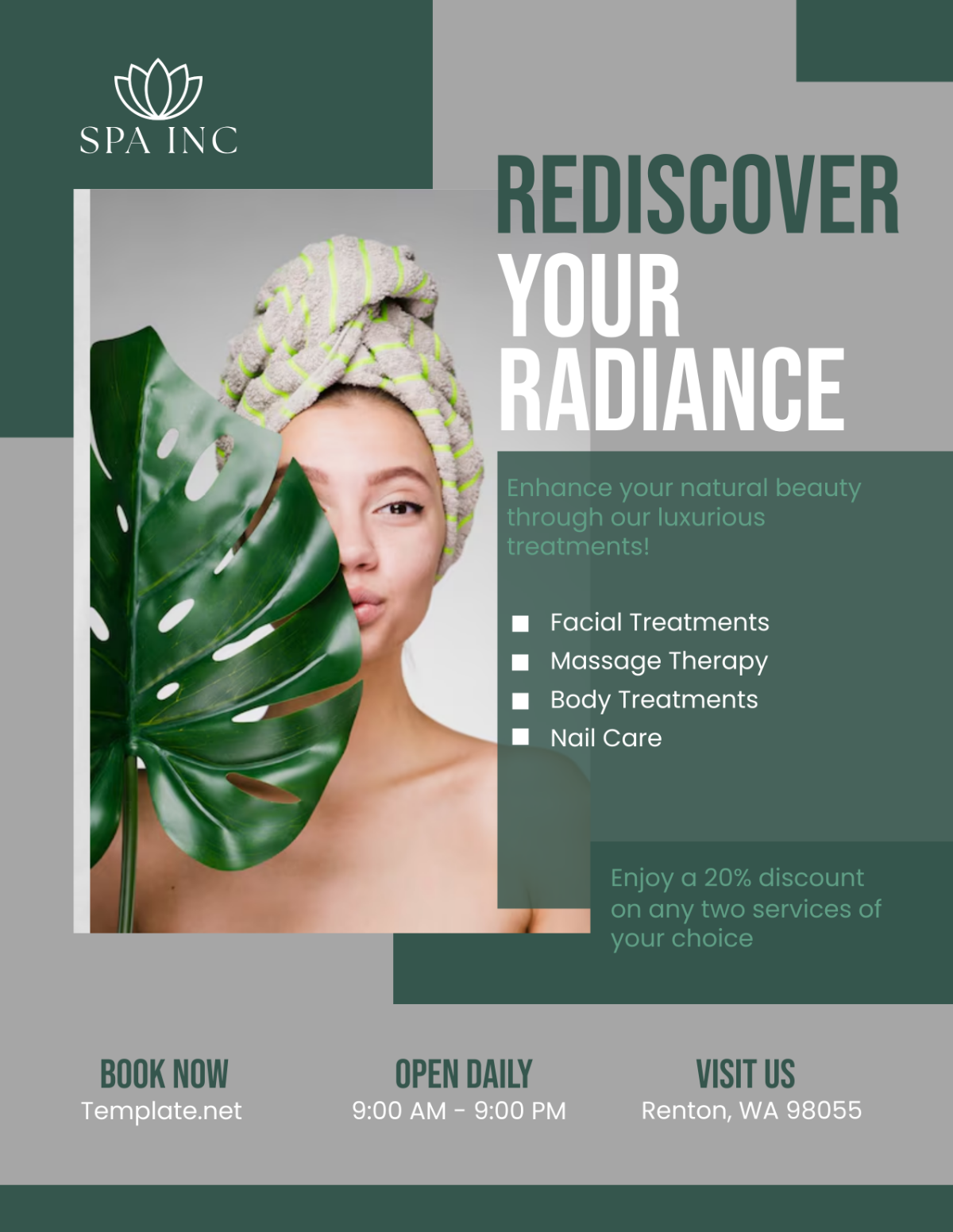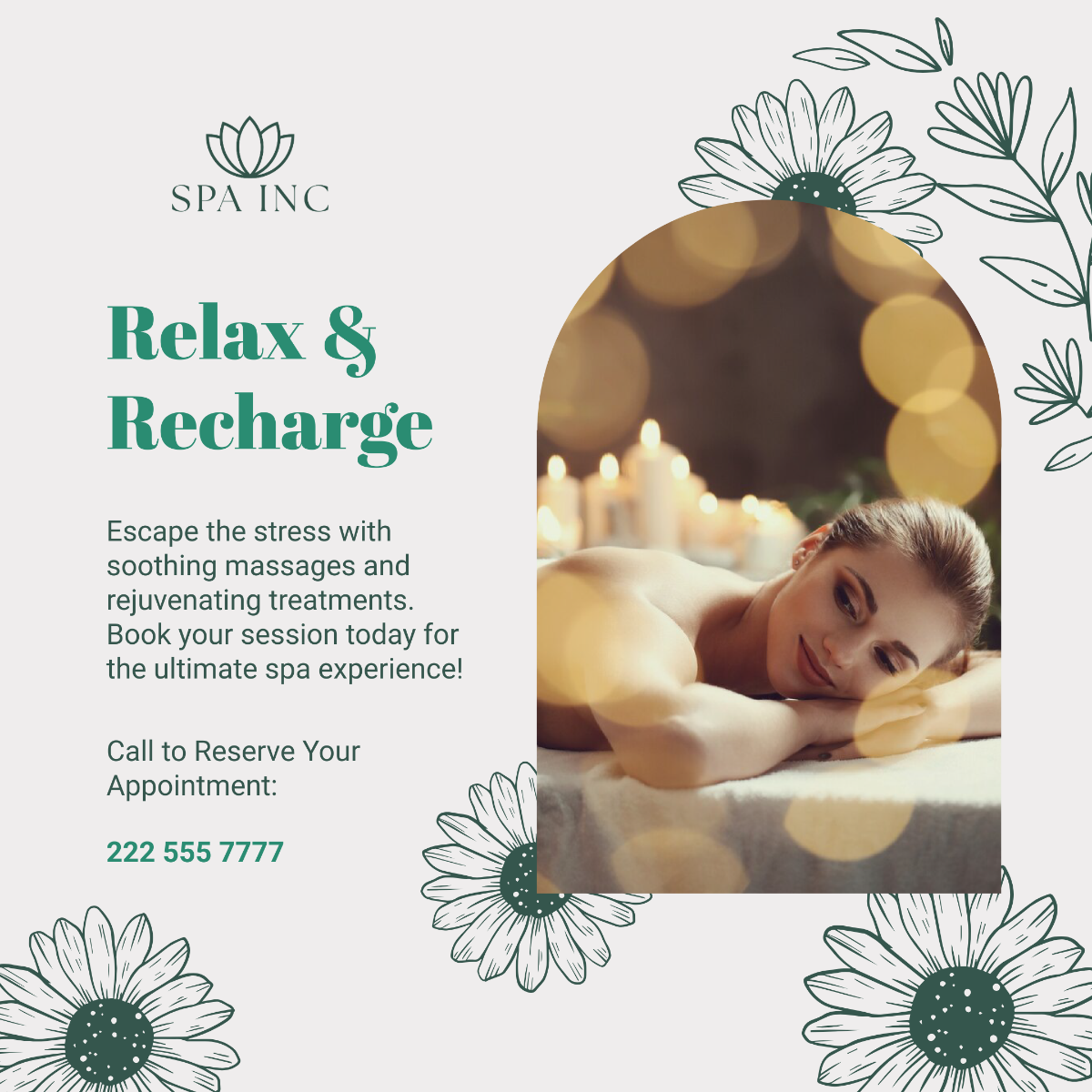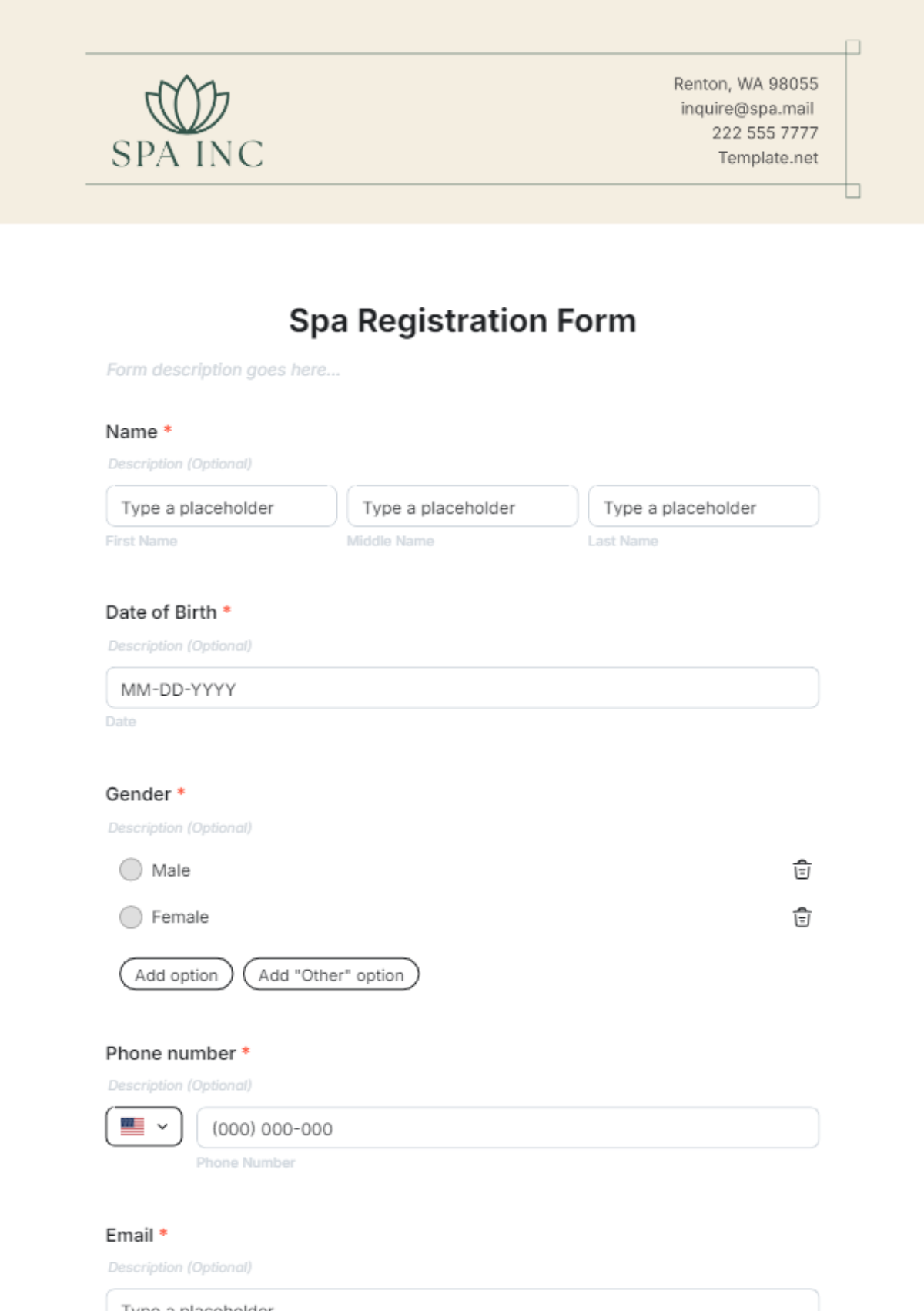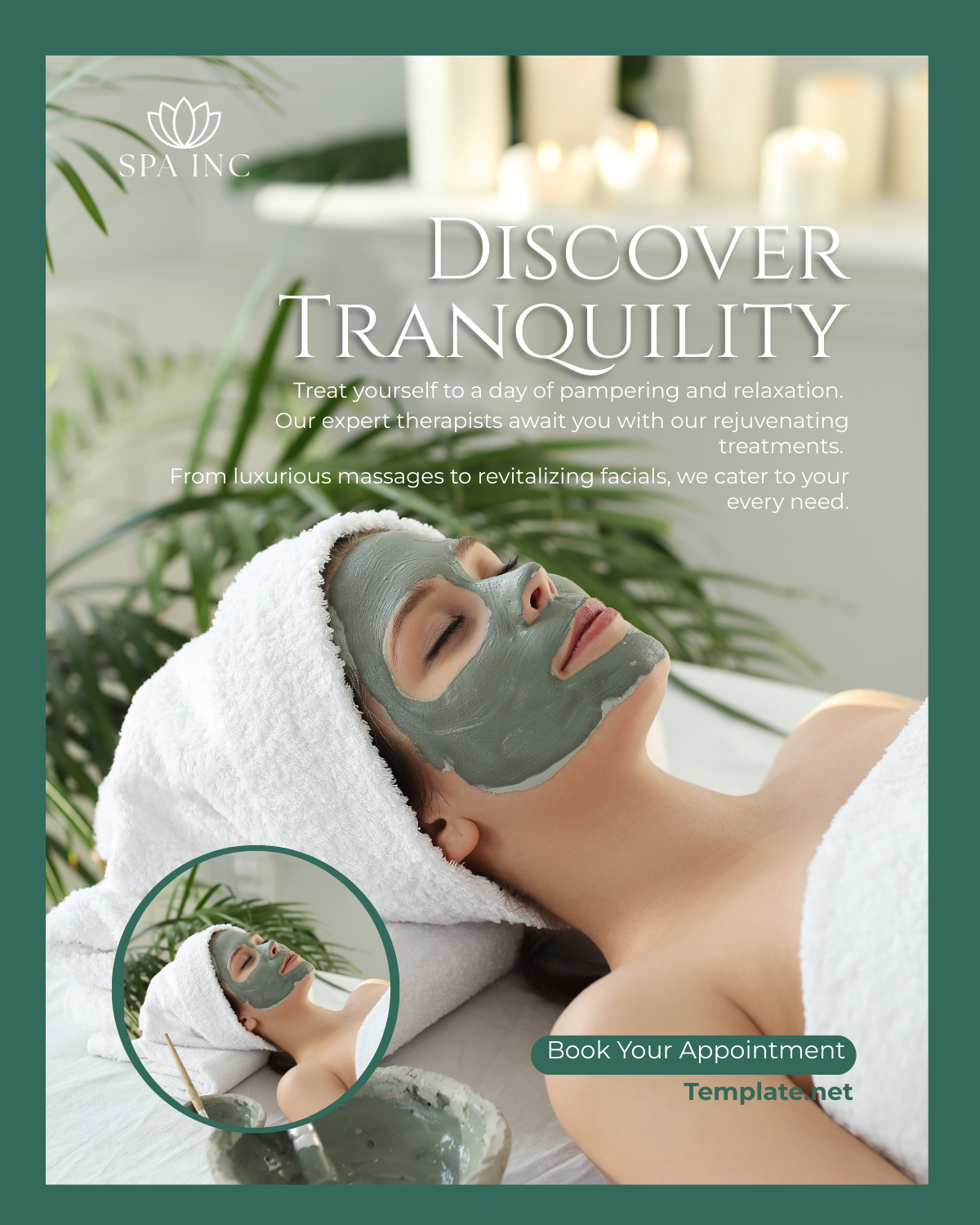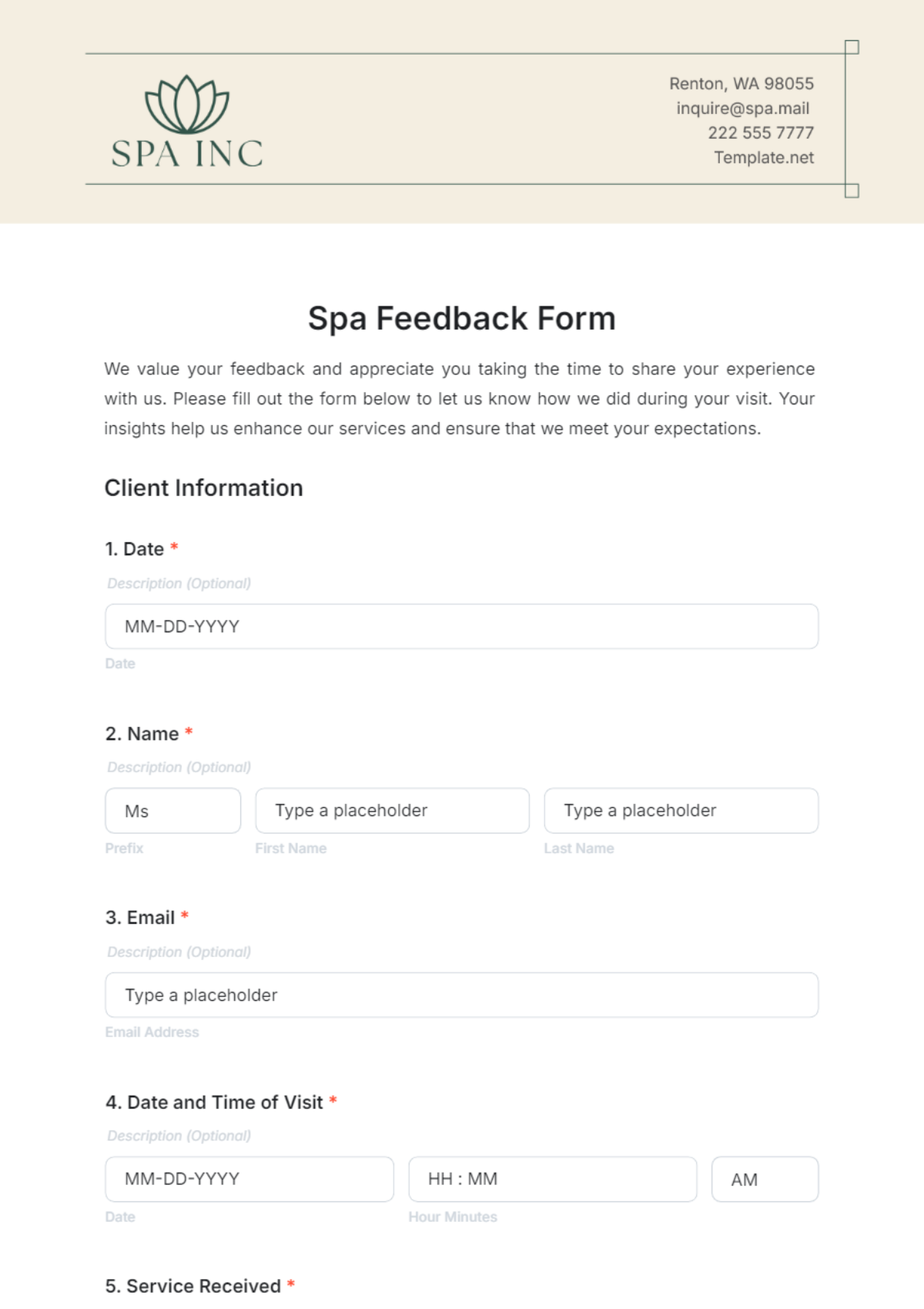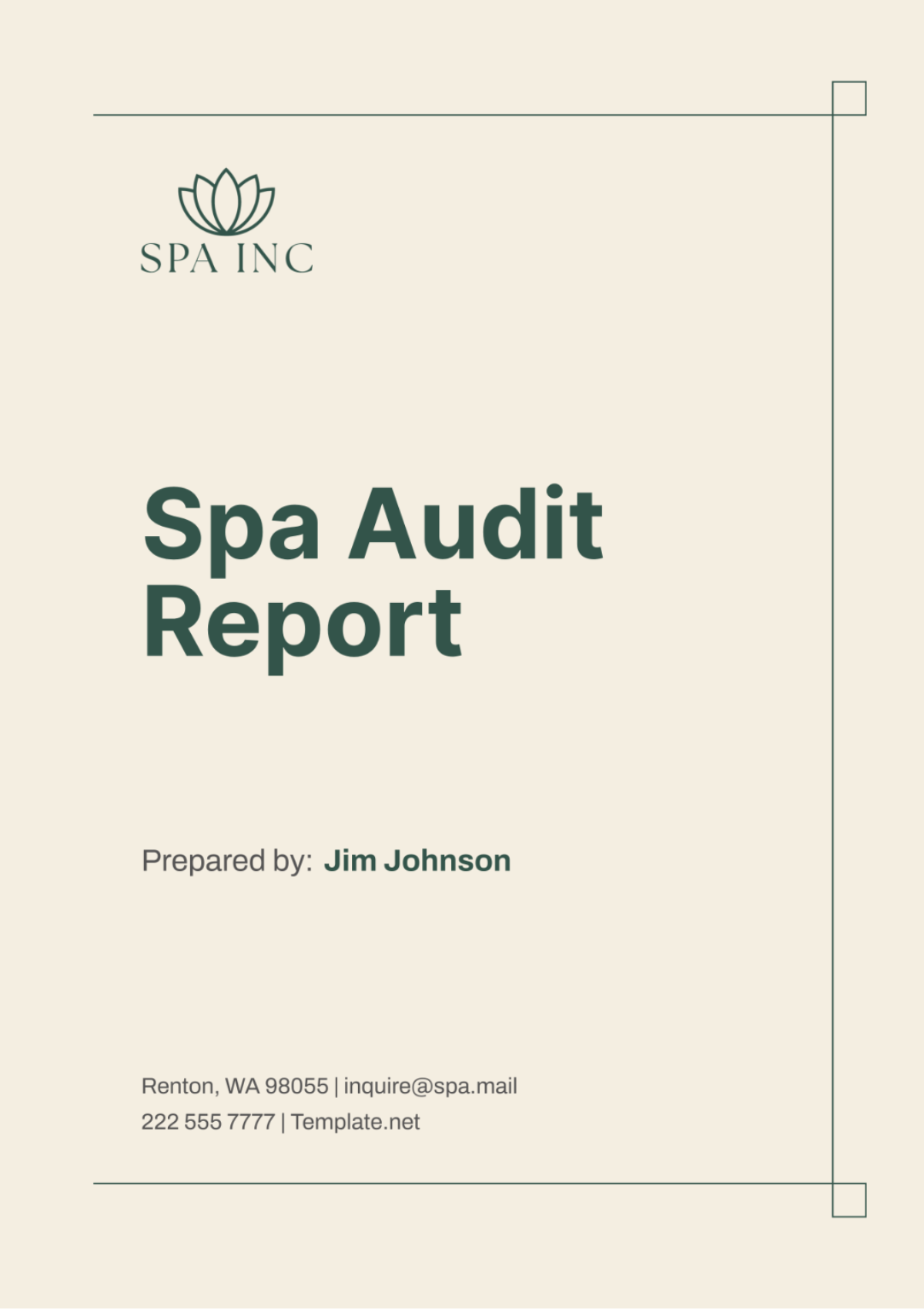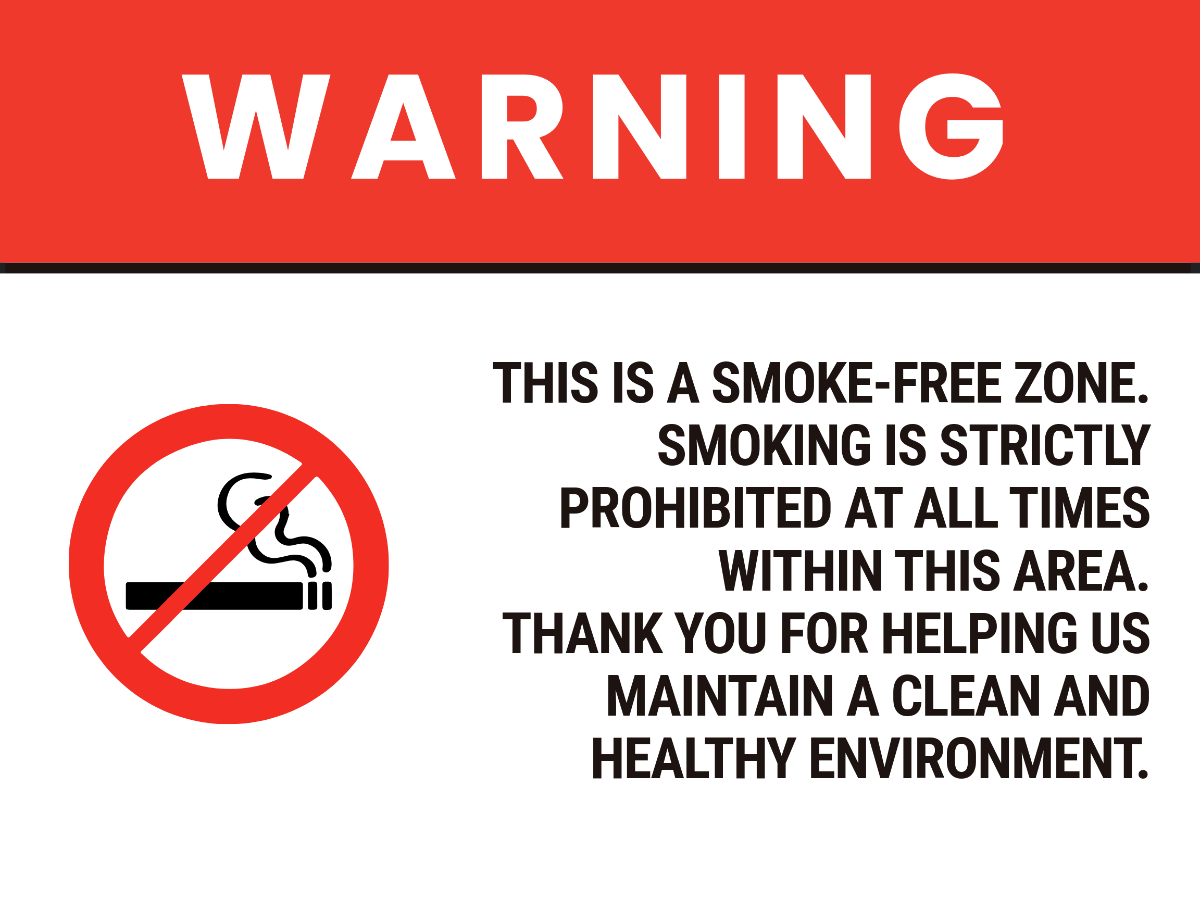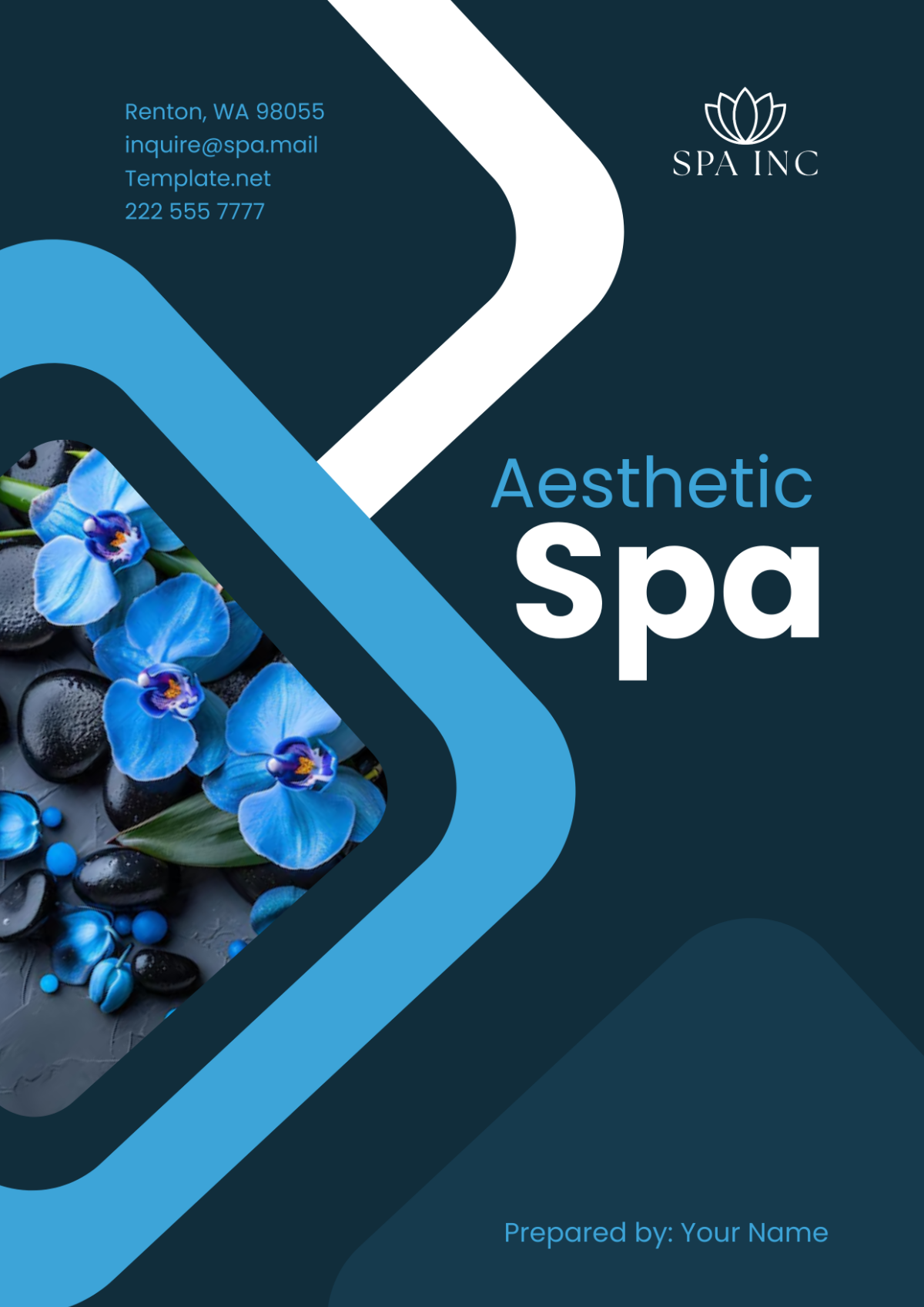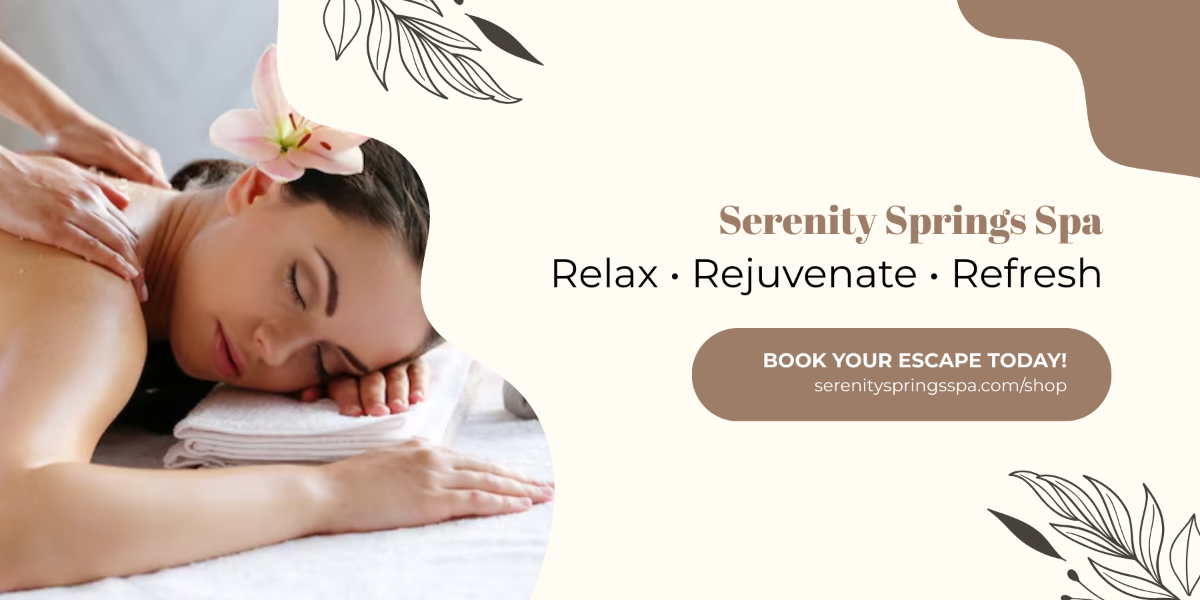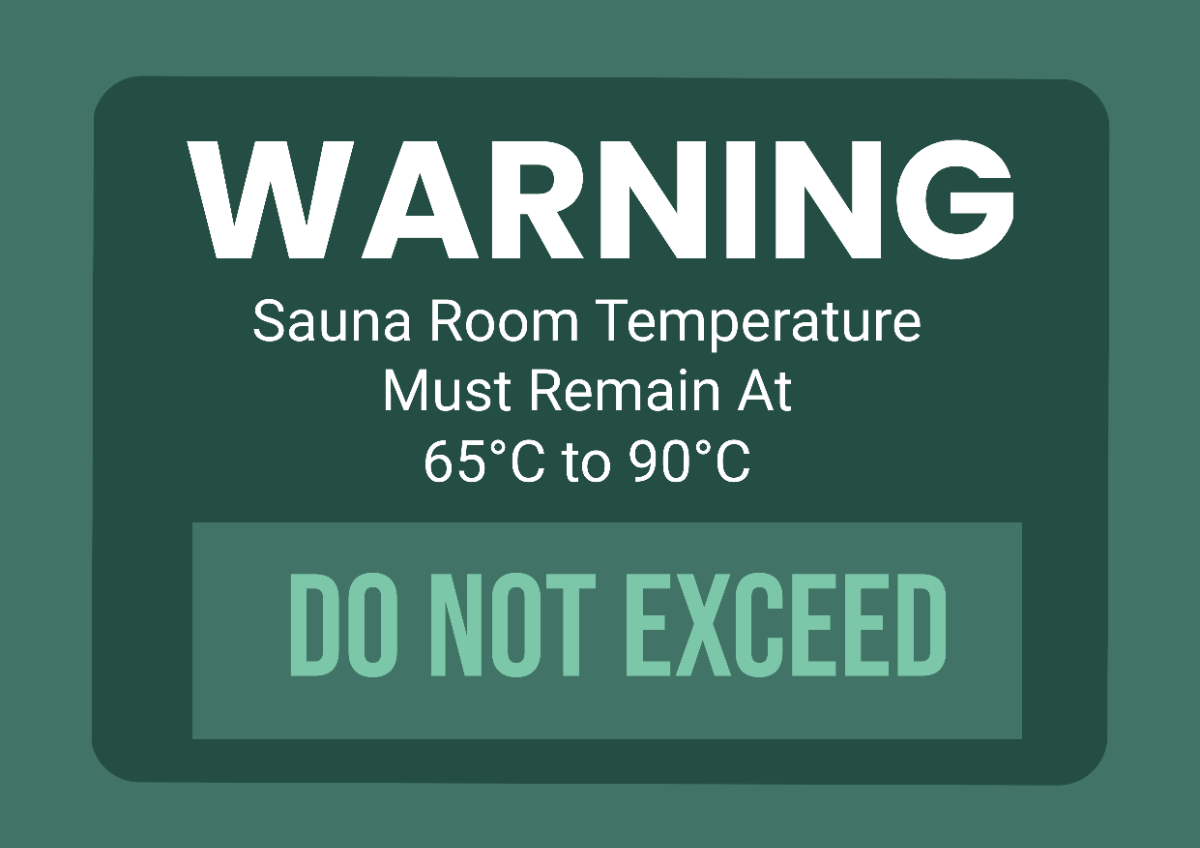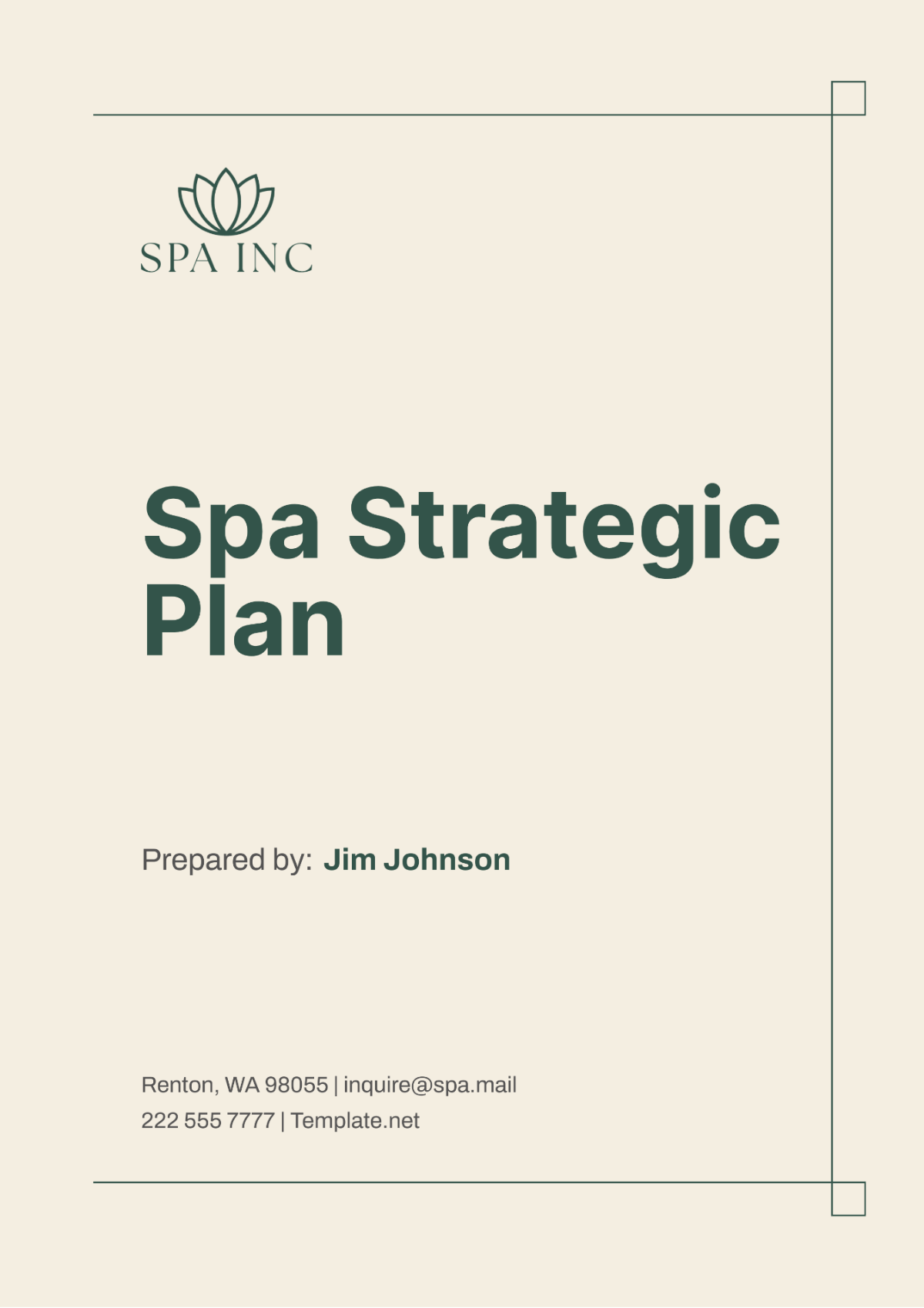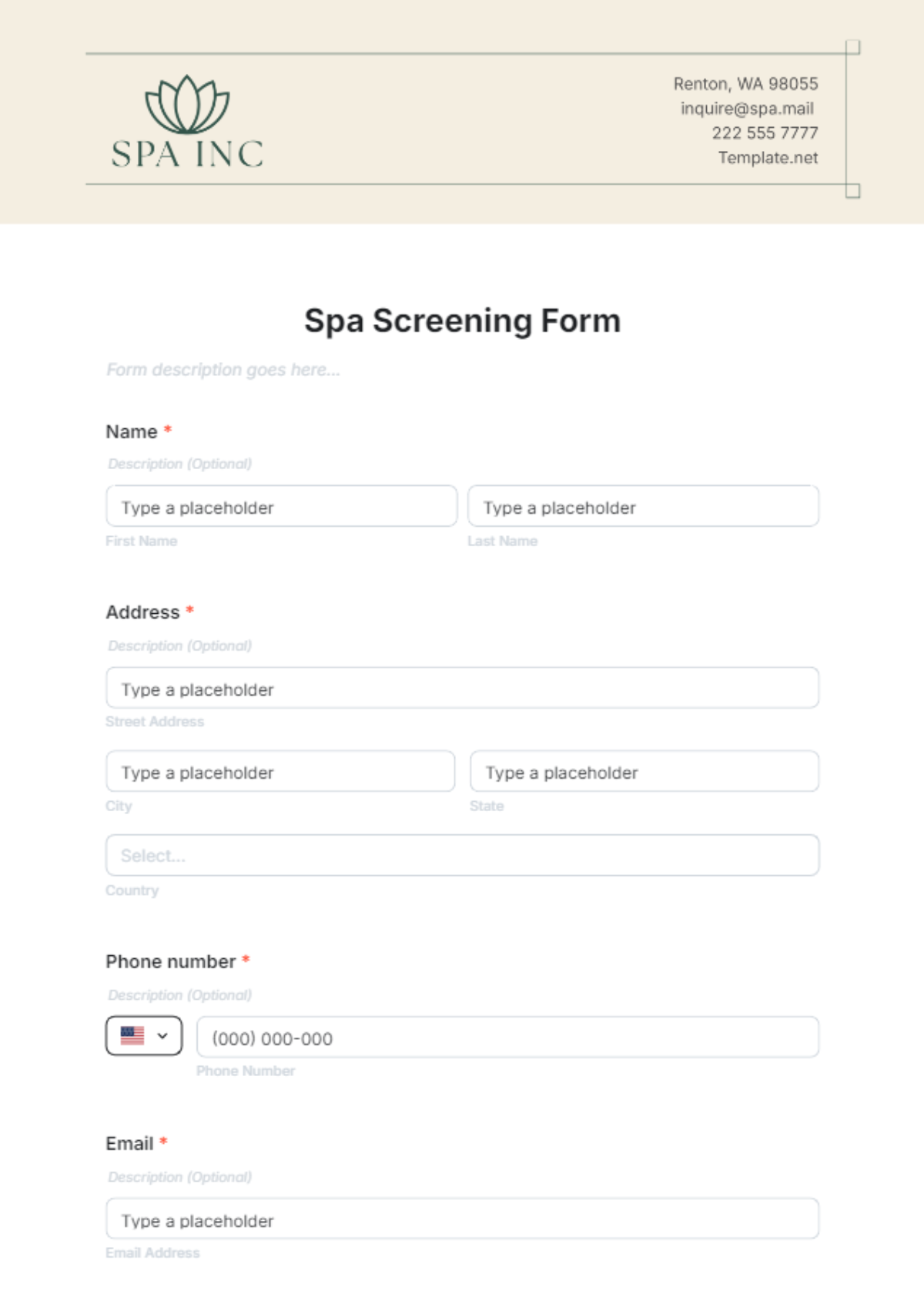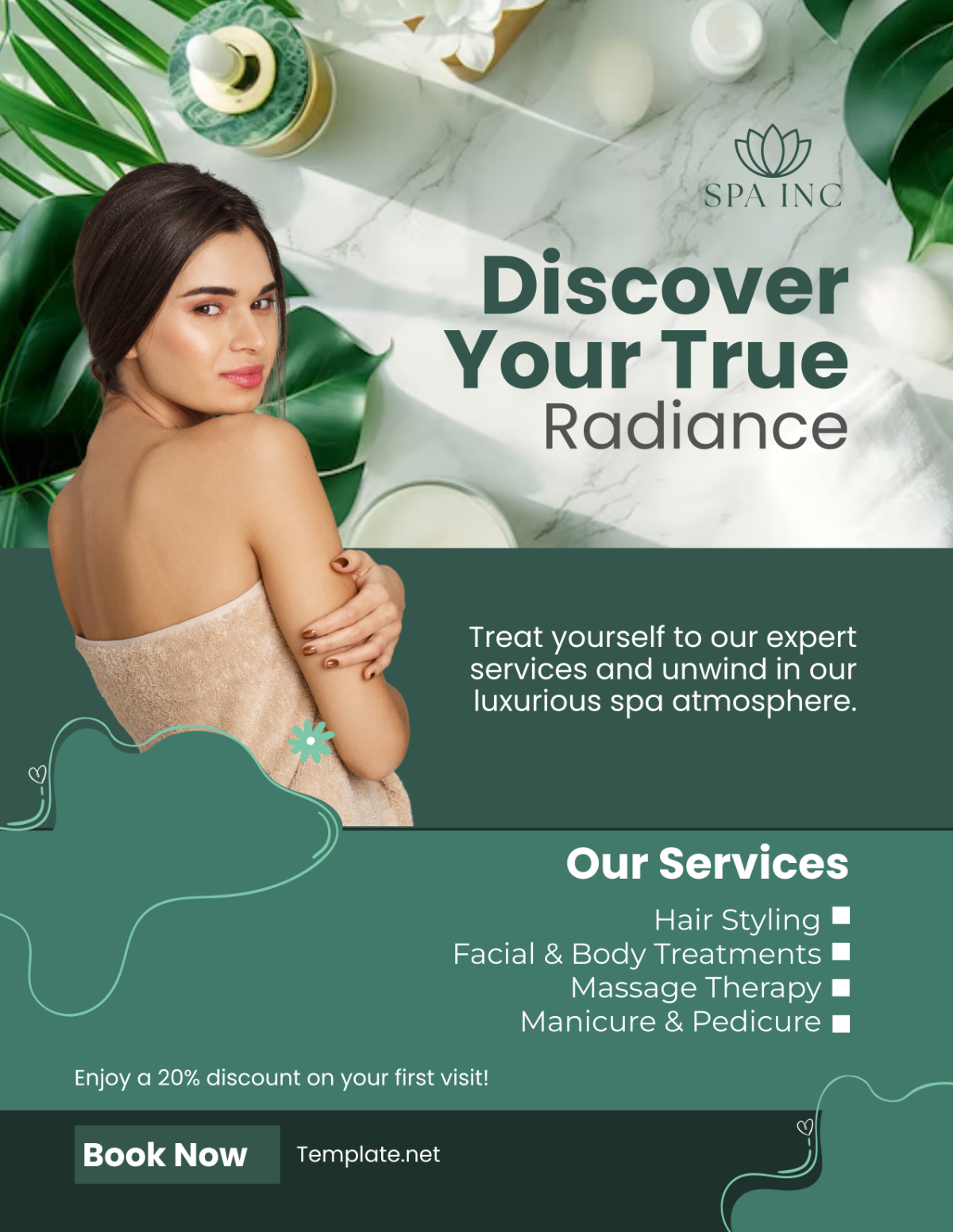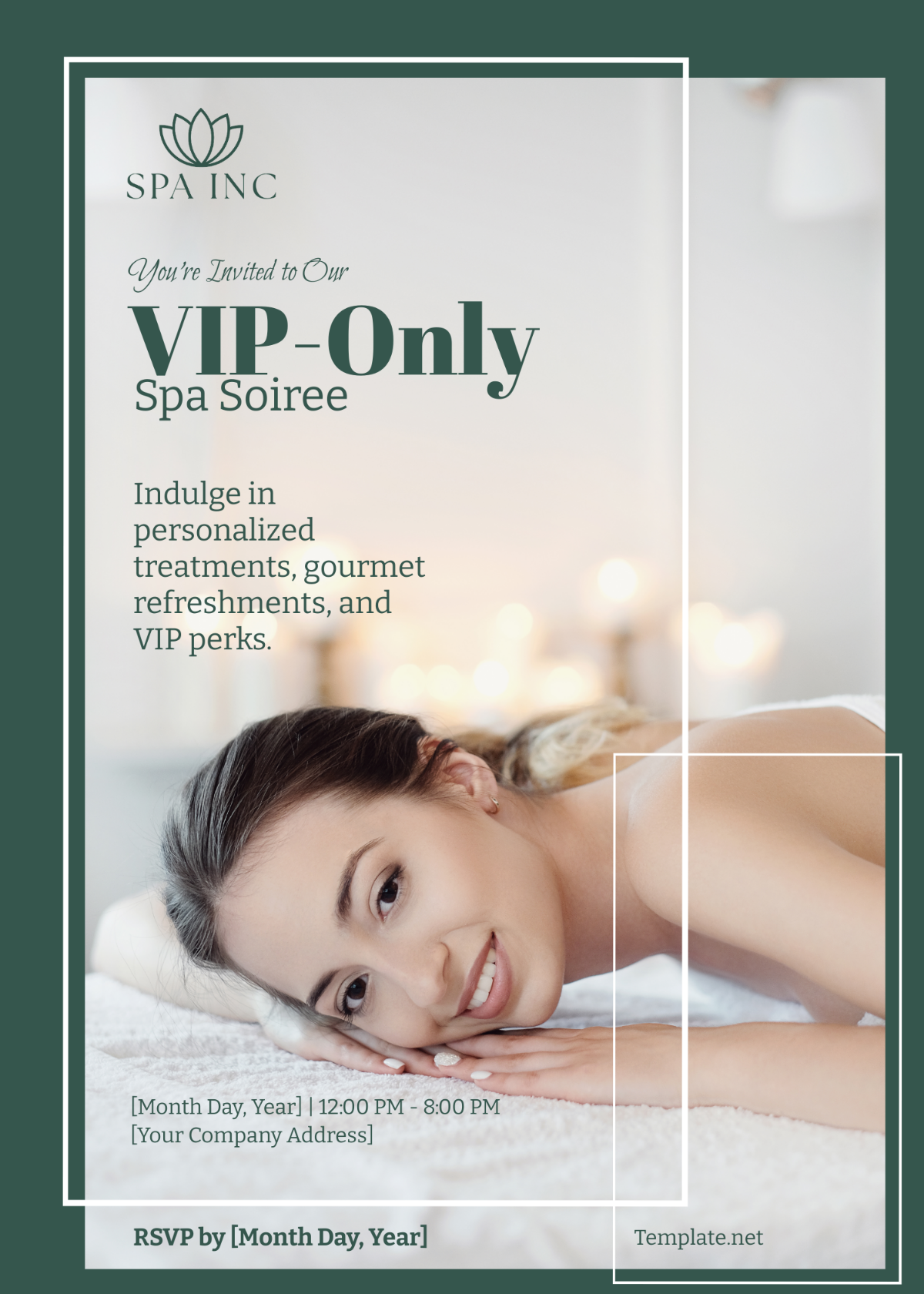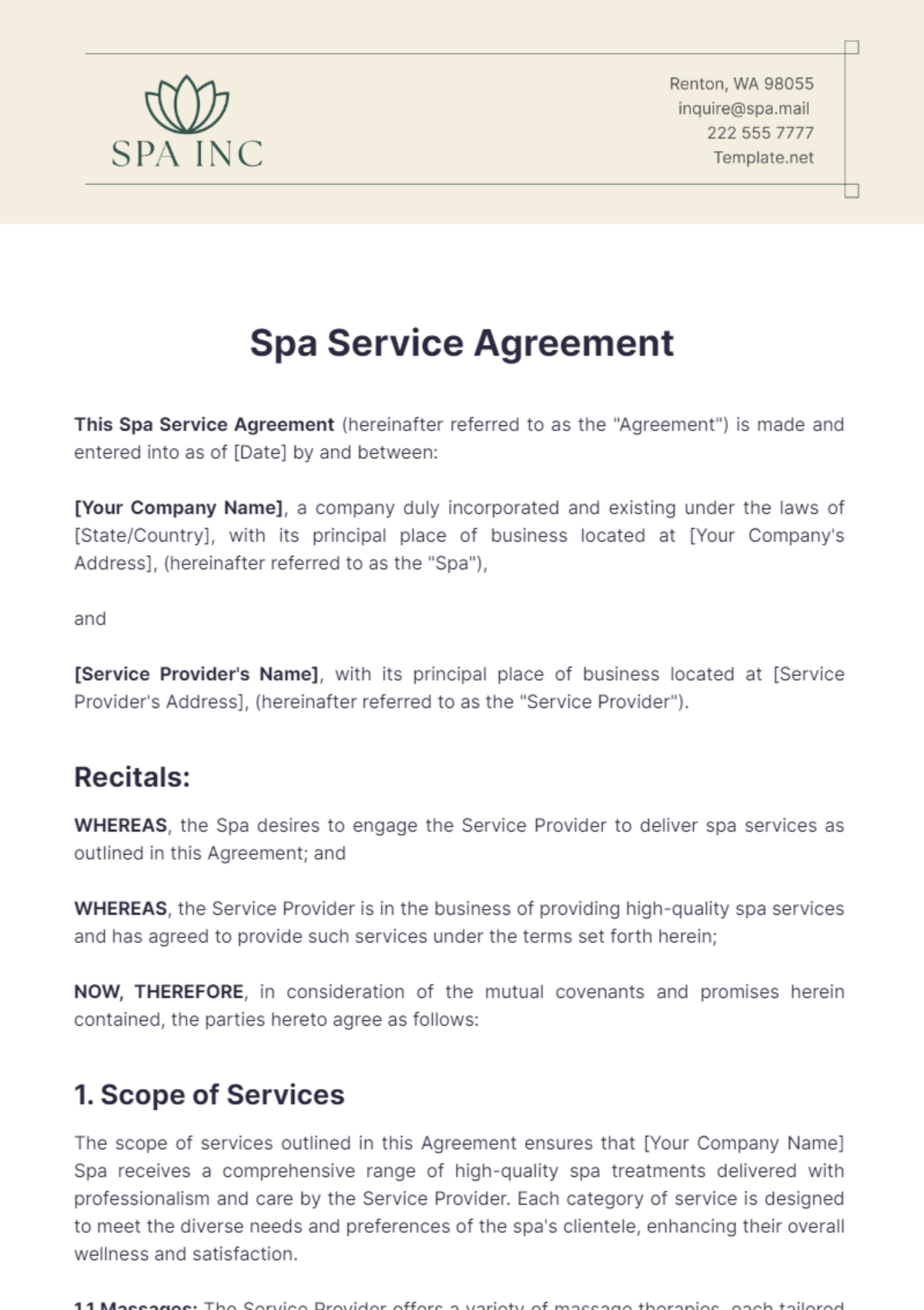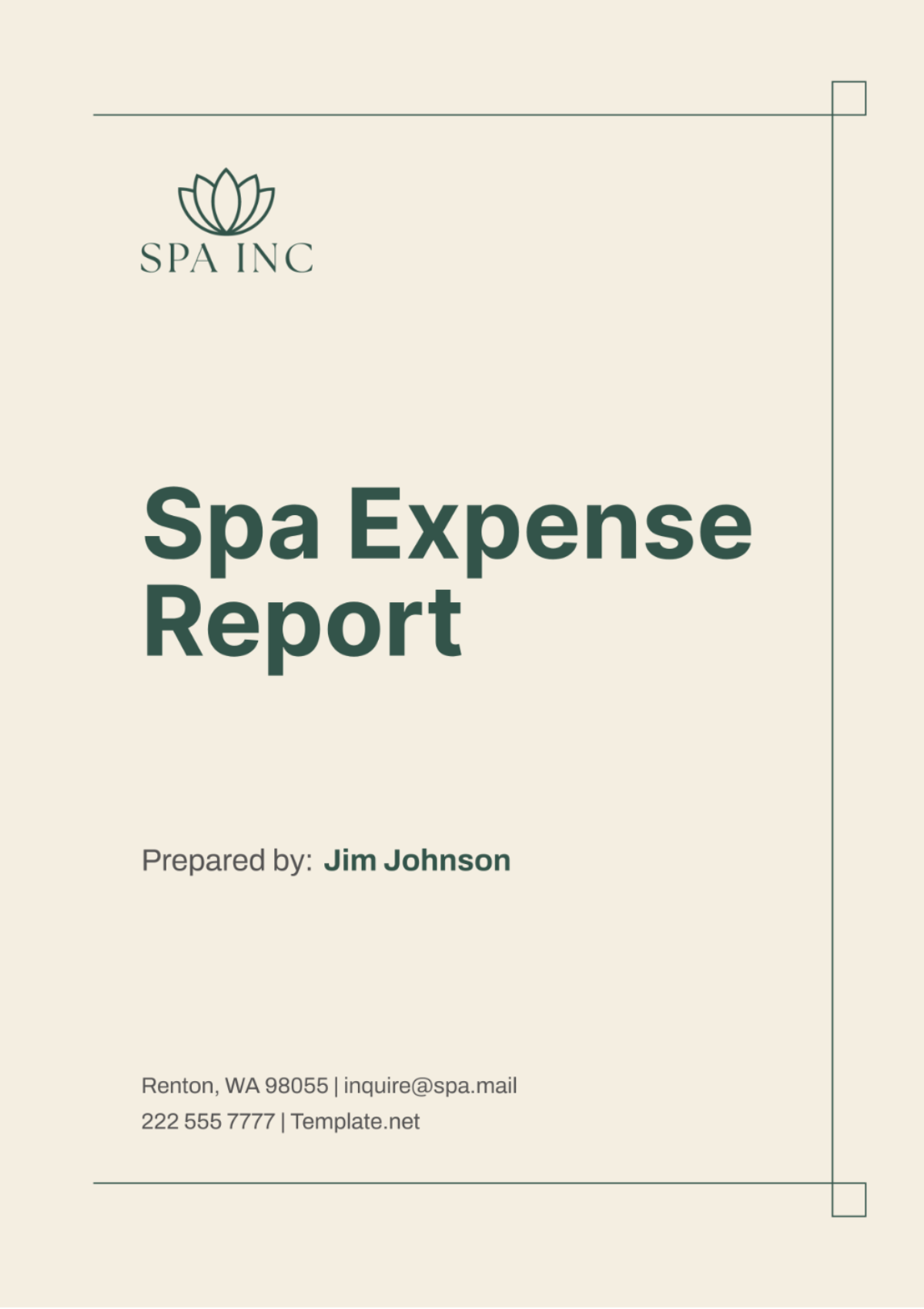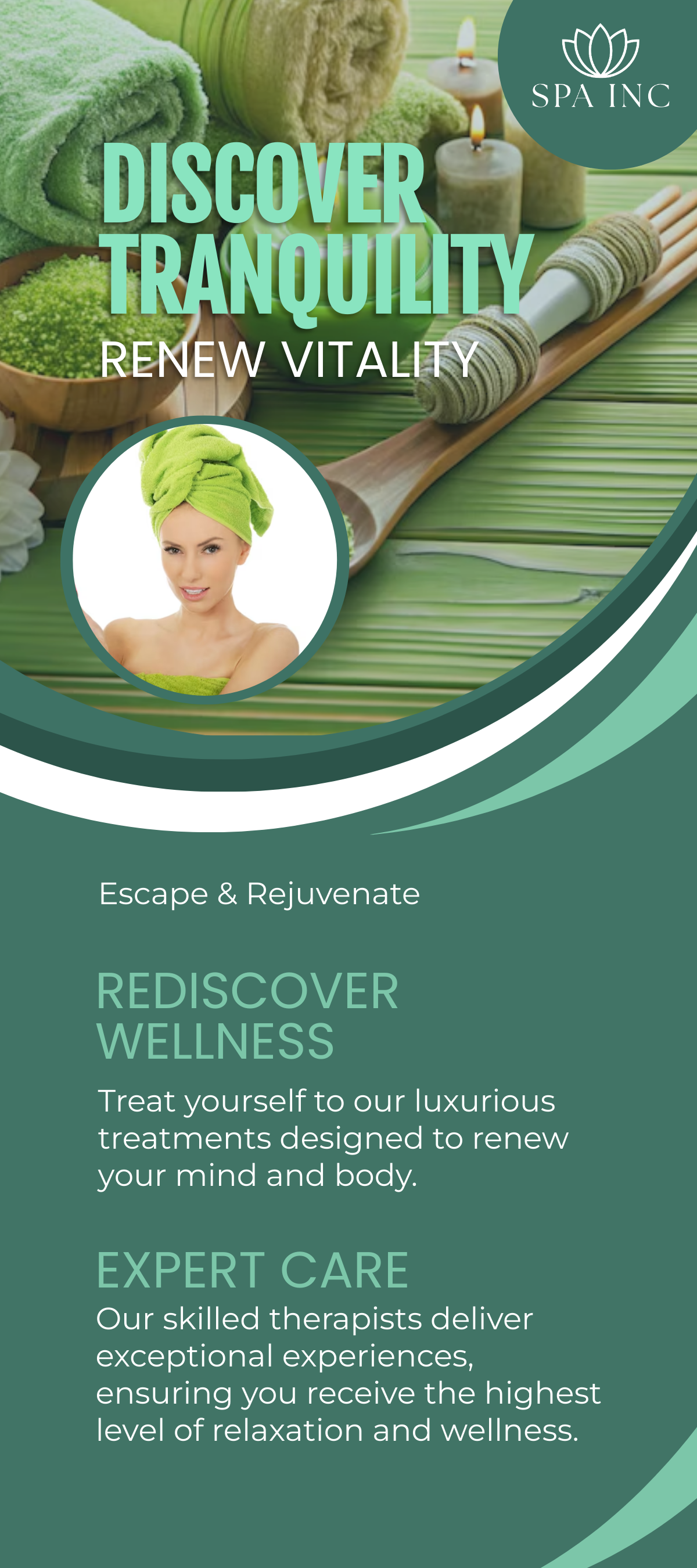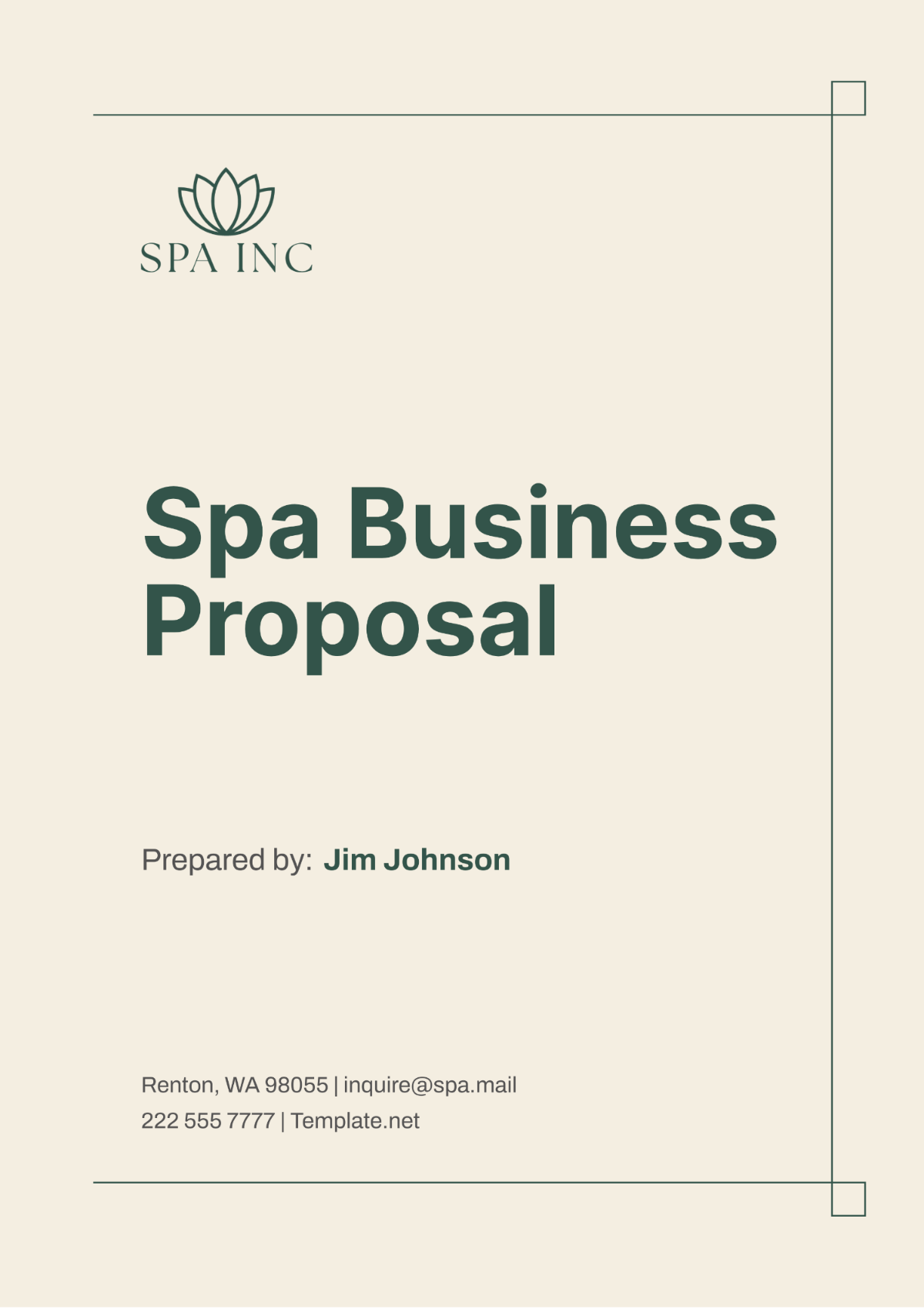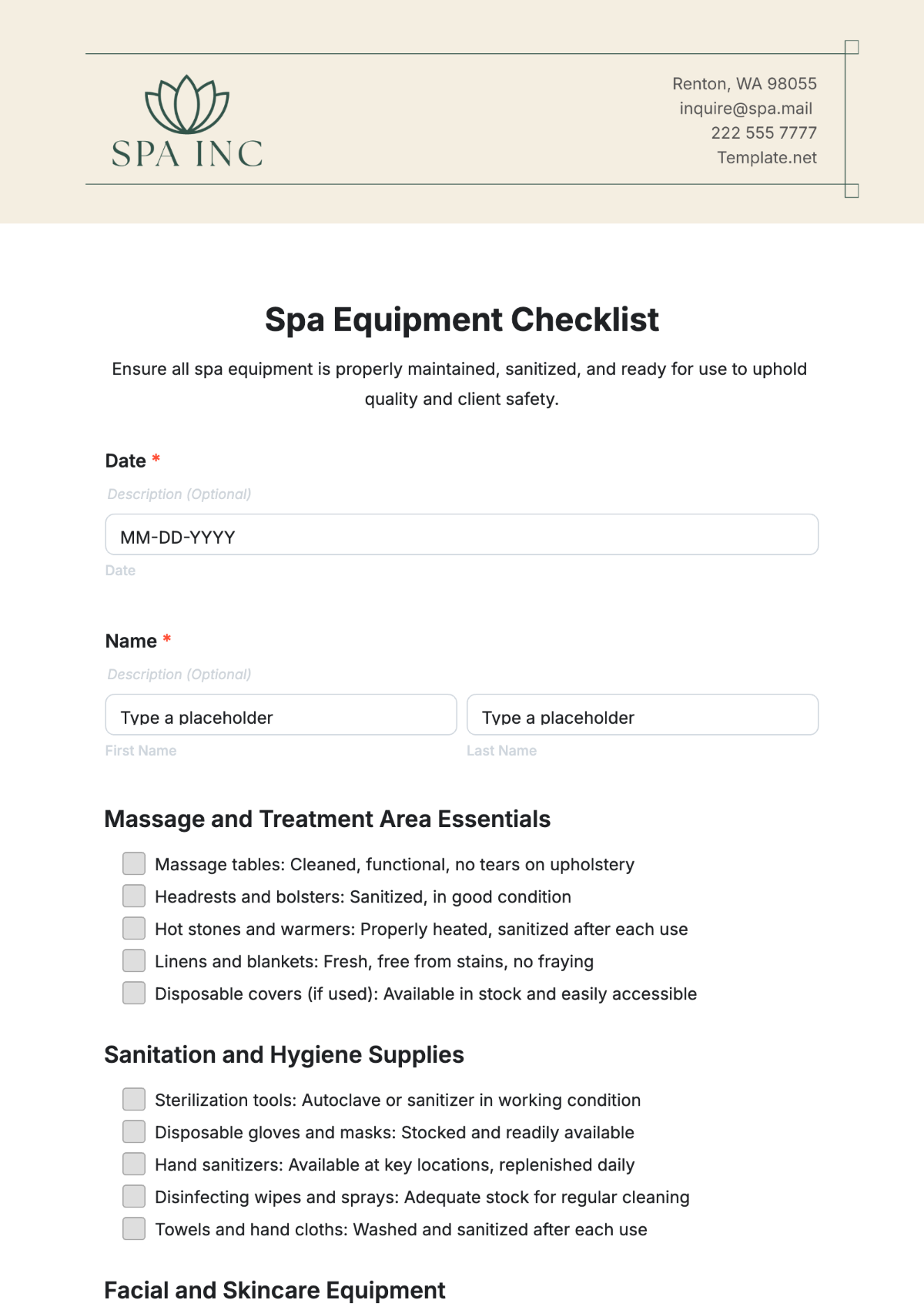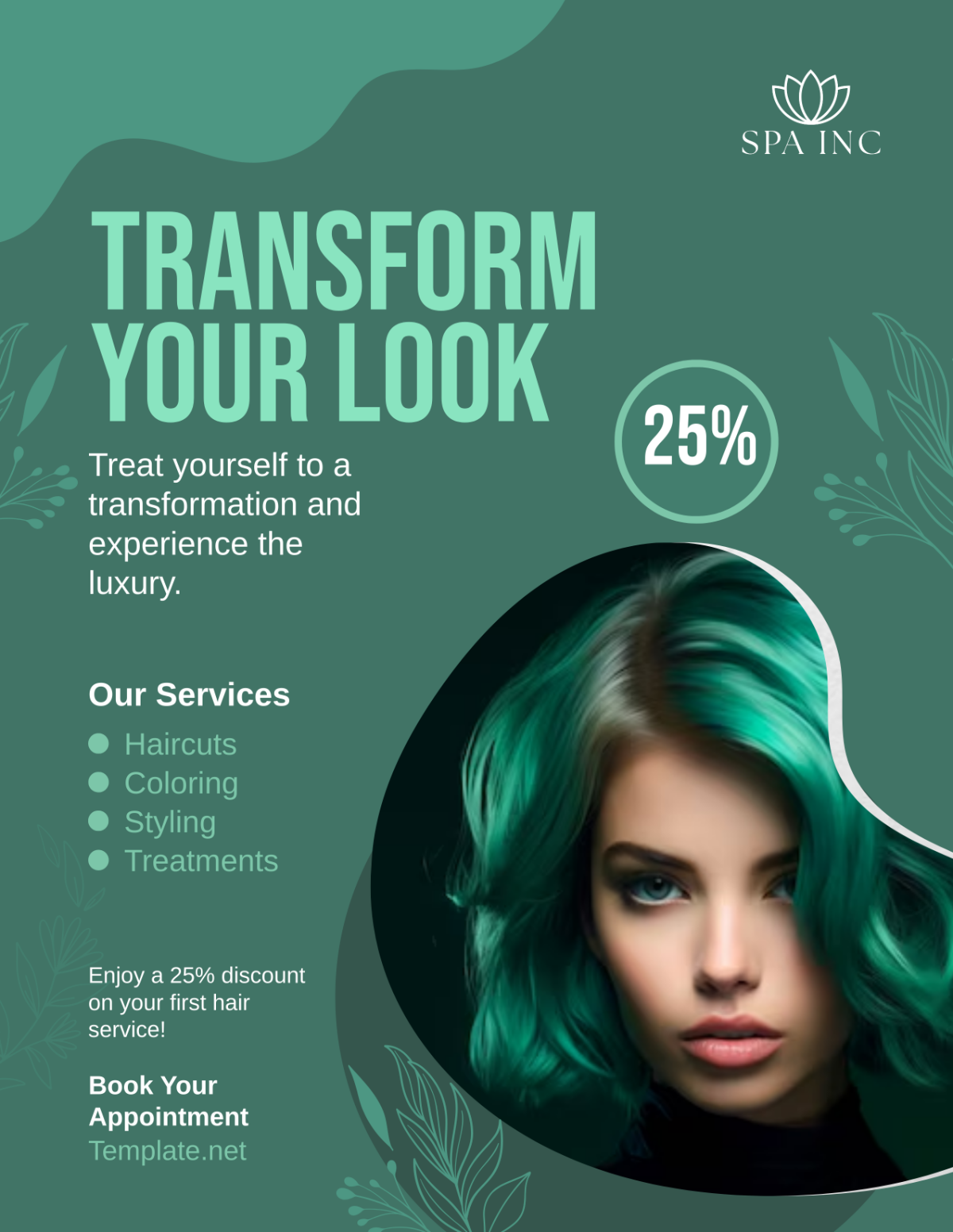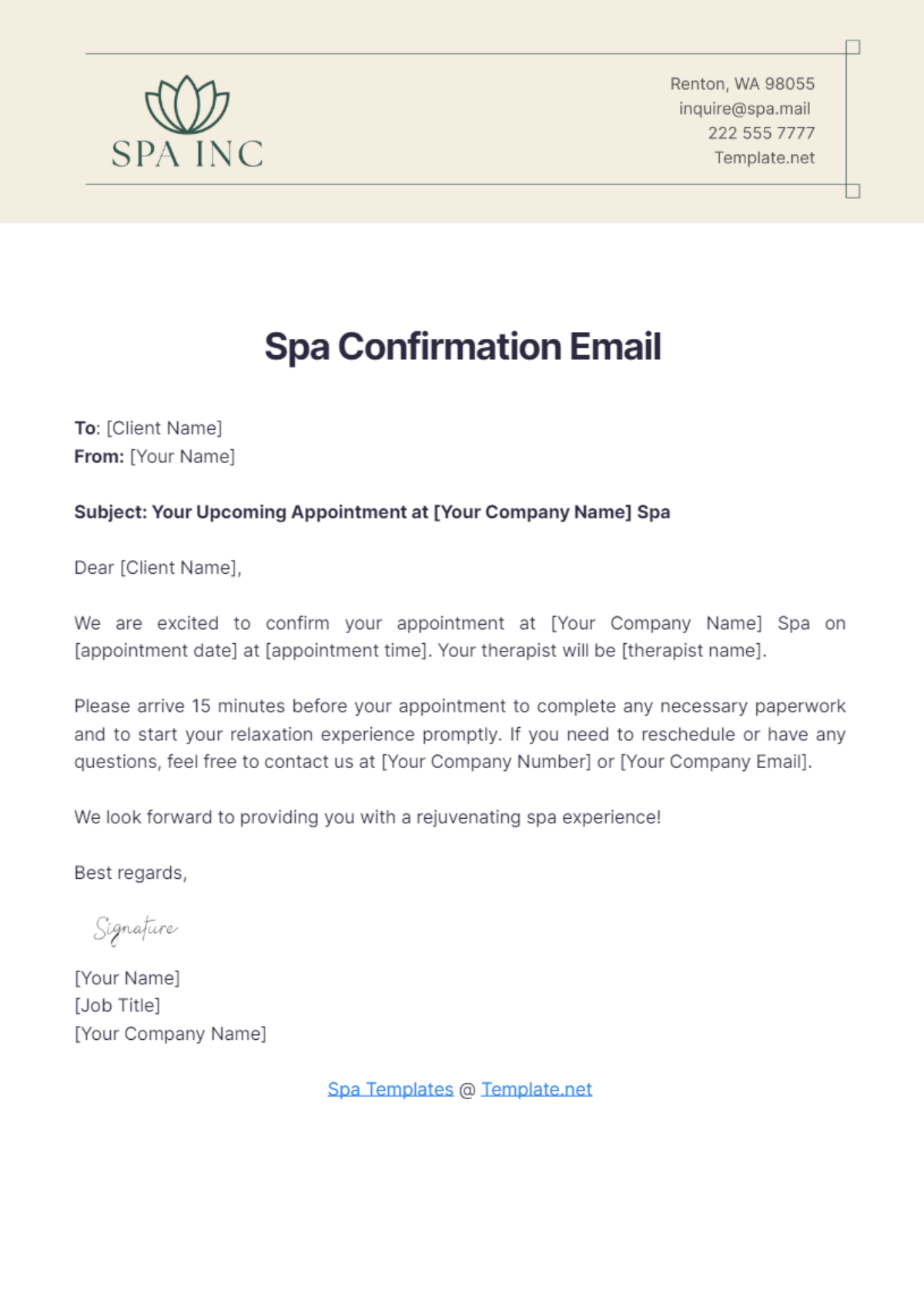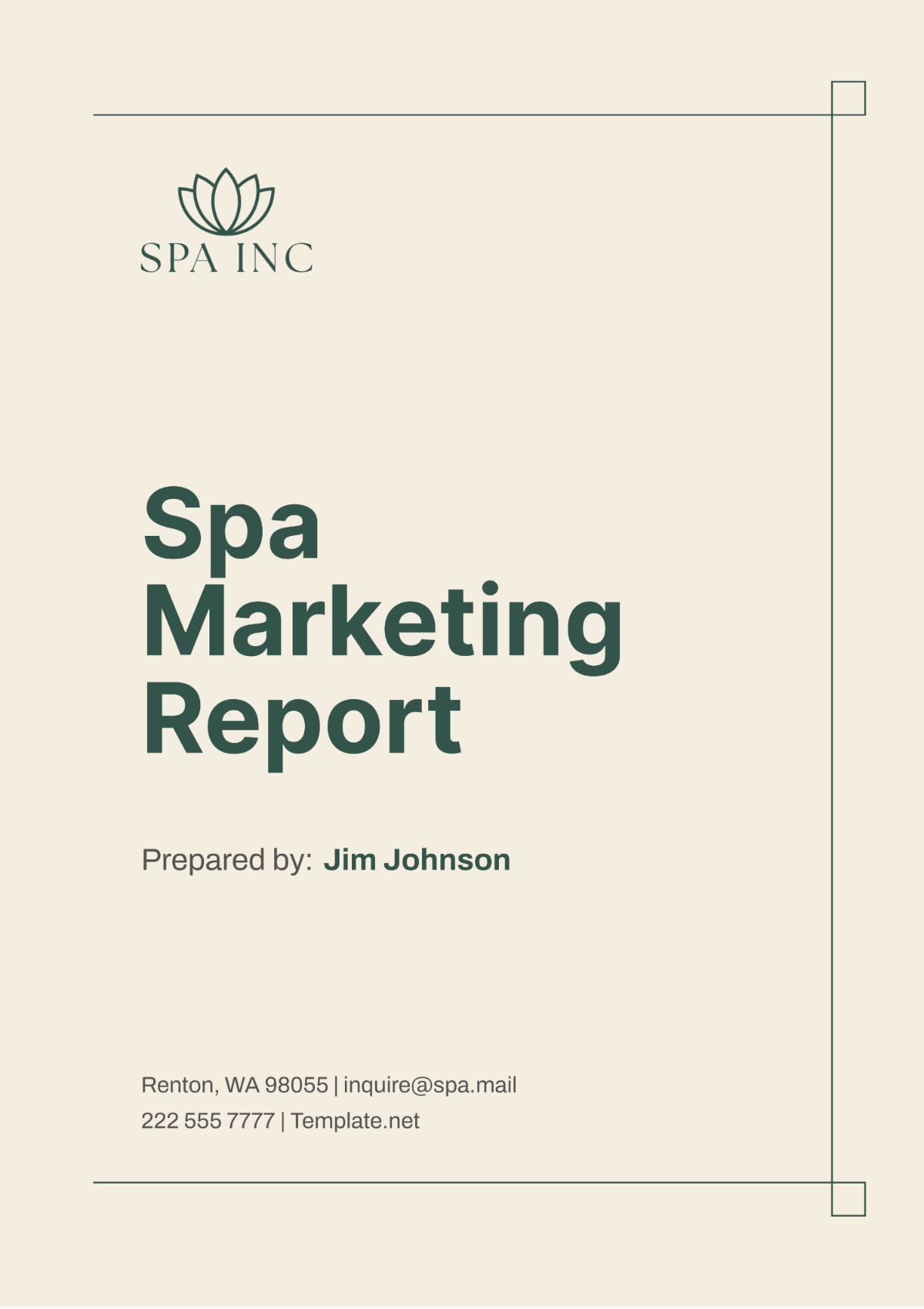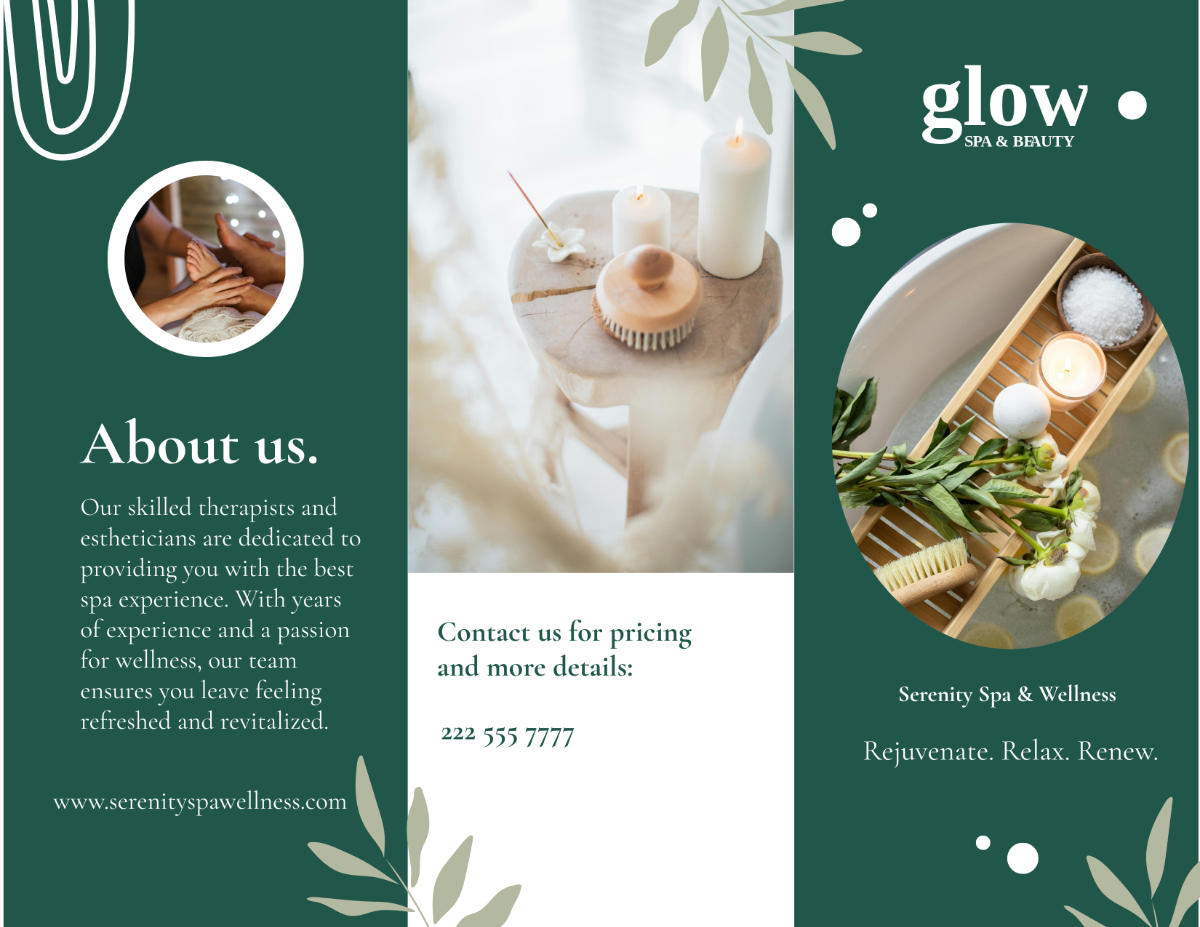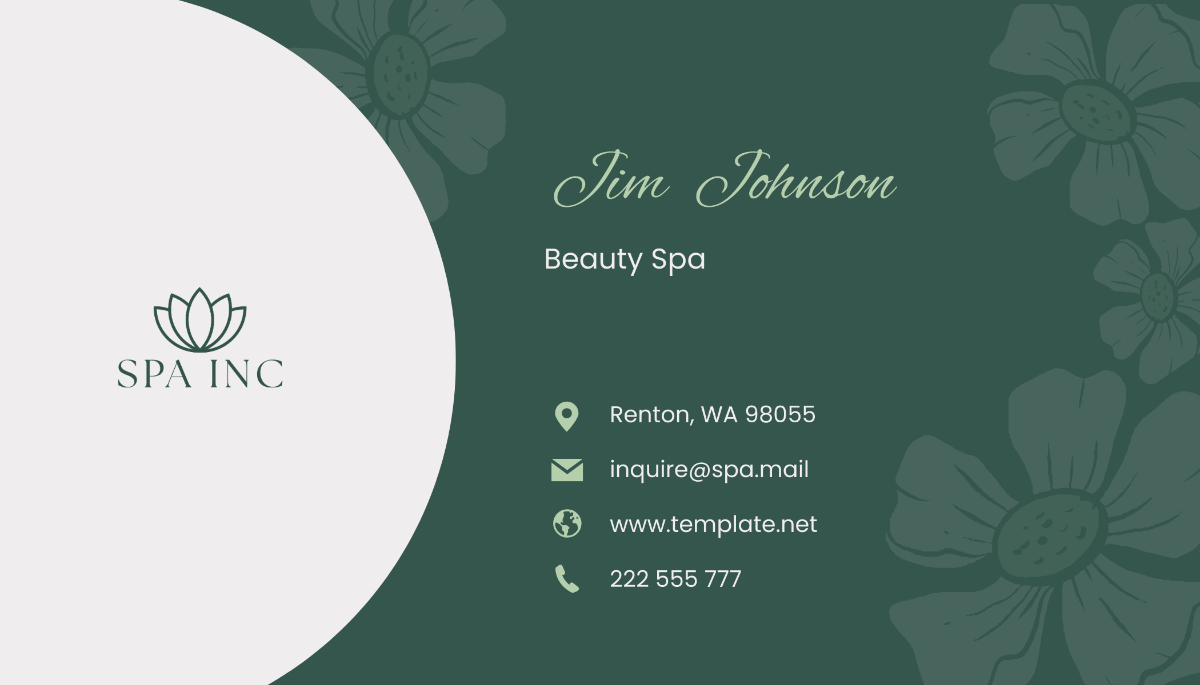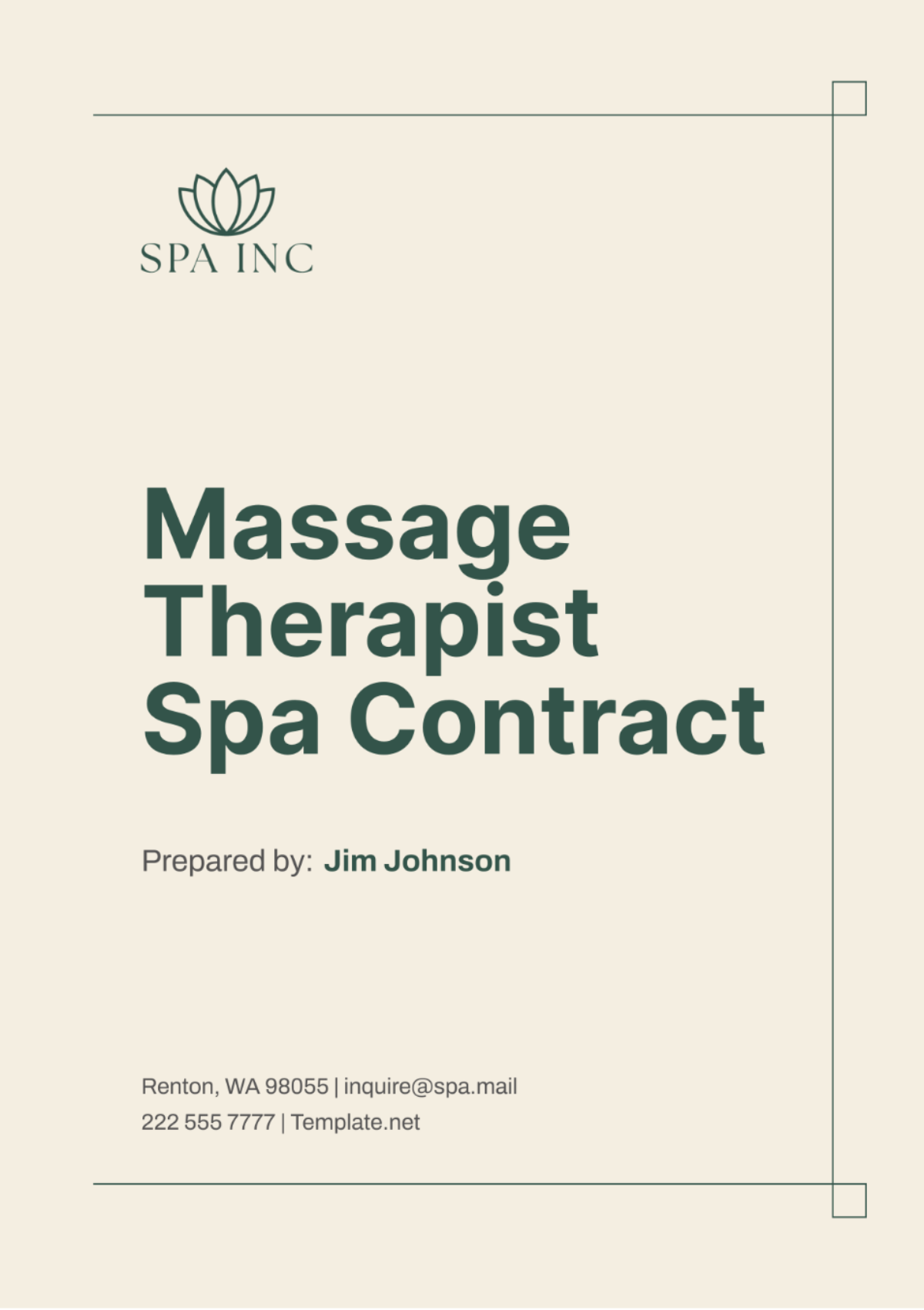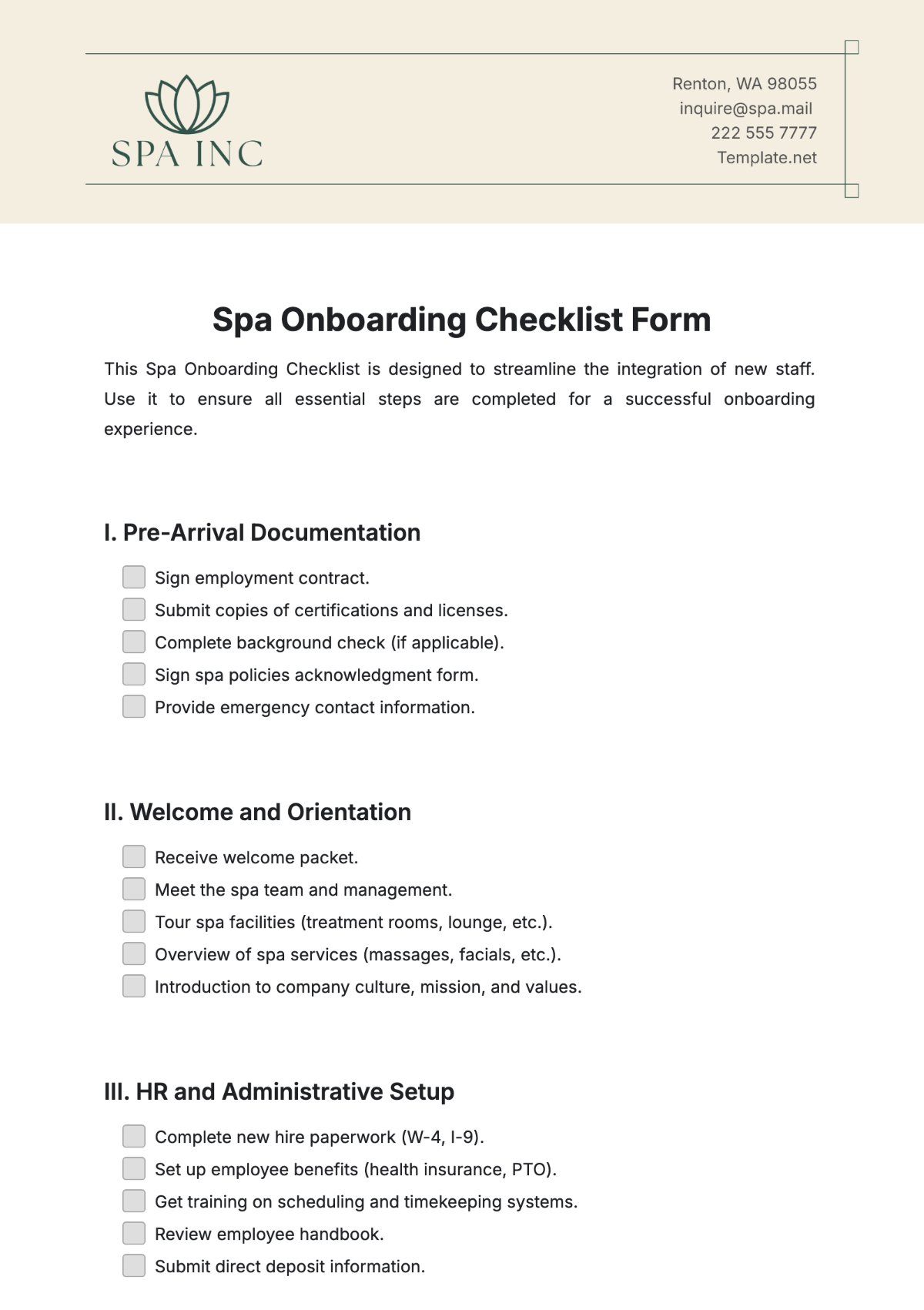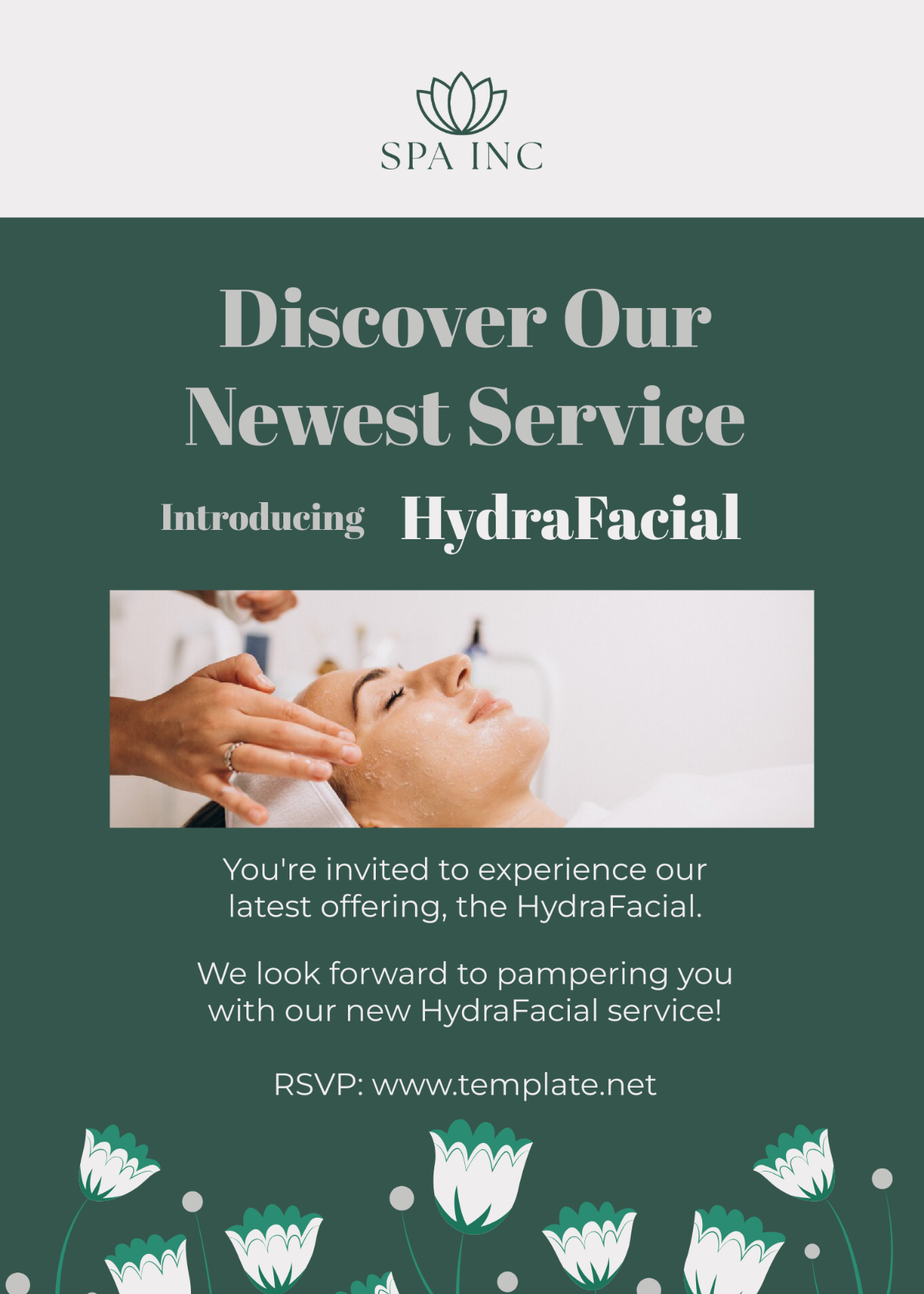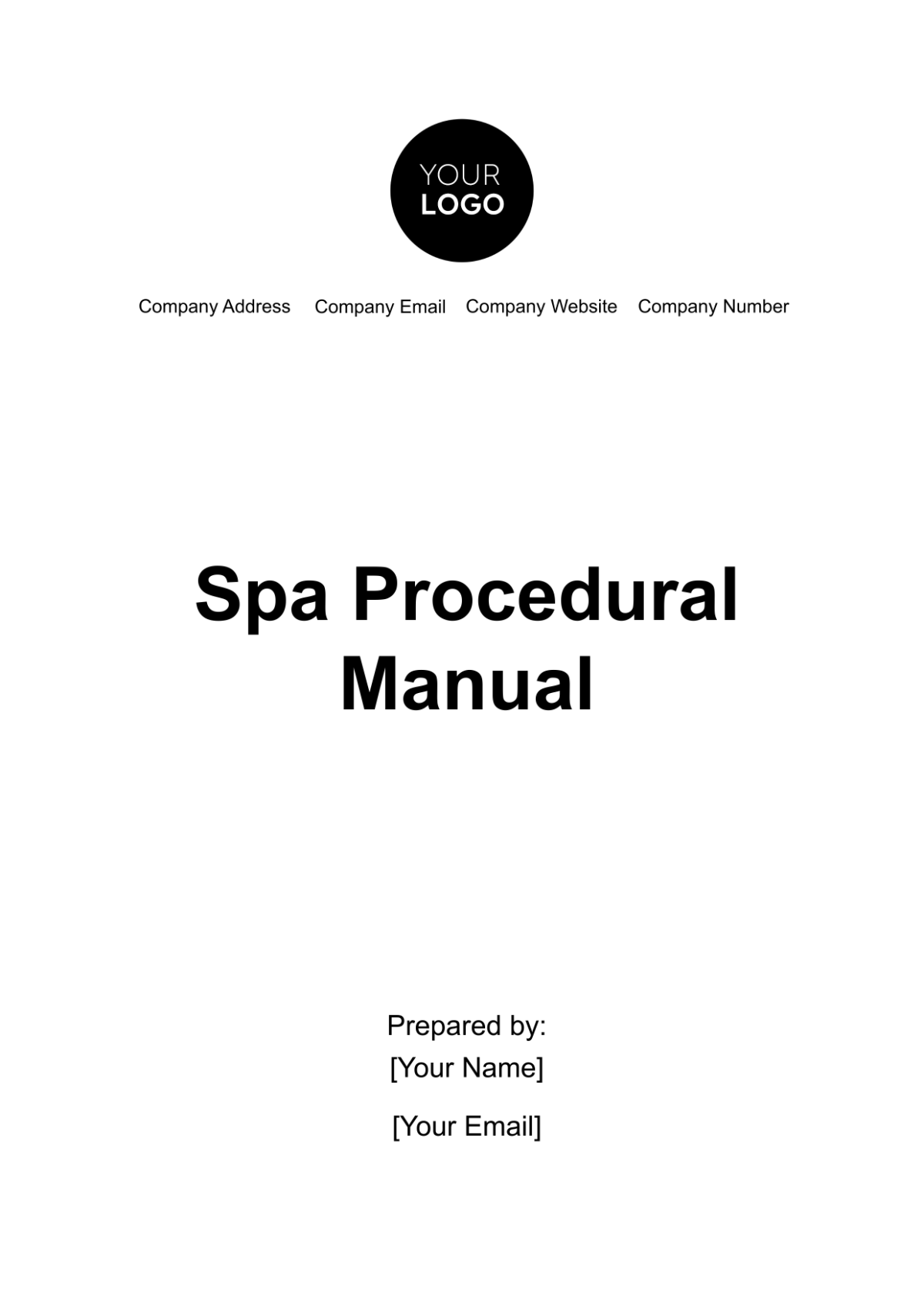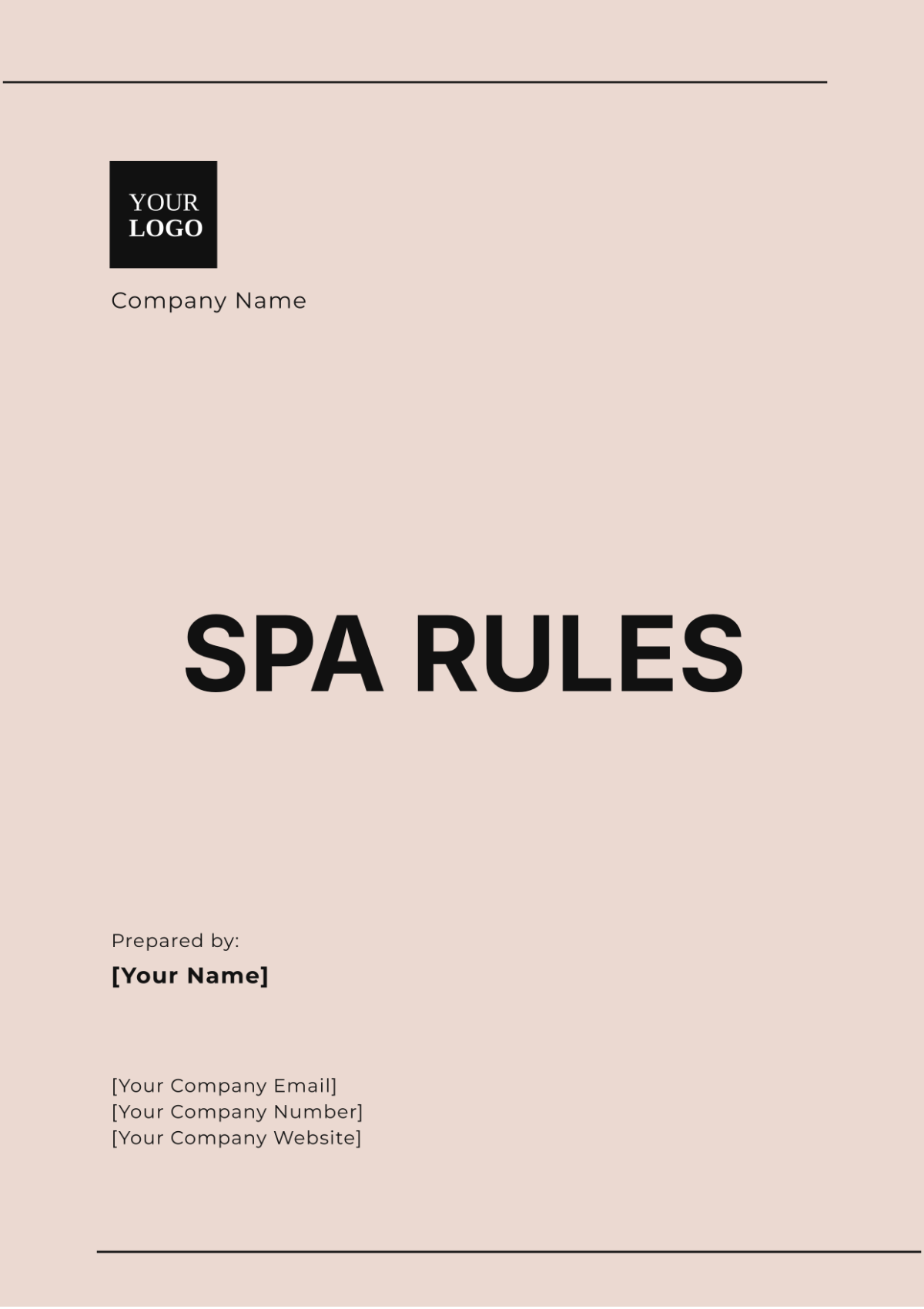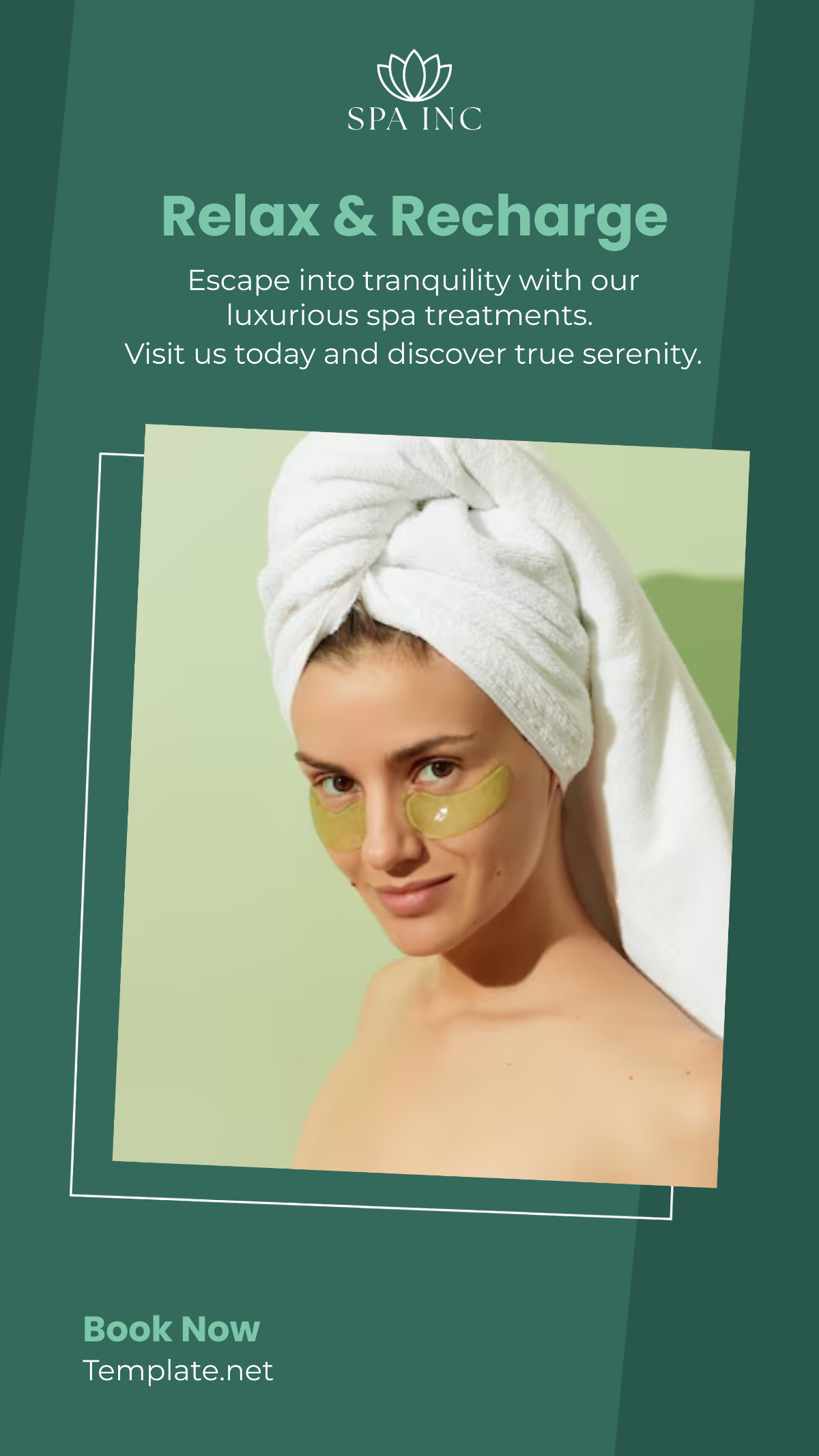Spa Training Guide
I. Introduction
A. Mission and Vision Statements
Mission:
To enhance the well-being of our clients through luxurious, personalized spa services delivered by a passionate and skilled team. We strive to create a welcoming and nurturing environment where every client feels valued and pampered. Our goal is to exceed client expectations with every visit.
Vision:
To be the leading spa in the community, known for our exceptional service, innovative treatments, and commitment to client satisfaction. We envision a future where our spa is synonymous with wellness and tranquility. We aim to set the standard for excellence in the spa industry through continuous improvement and client-centered service.
II. Spa Services and Treatments
A. Types of Services Offered
Massage Therapies
Swedish Massage: A gentle, relaxing massage using smooth, gliding strokes. It aims to increase blood circulation and relieve muscle tension, providing an overall sense of relaxation. Ideal for first-time spa-goers or those looking for a soothing experience.
Deep Tissue Massage: Focuses on deeper layers of muscles and connective tissue to relieve tension. This massage uses slow strokes and deep pressure to address chronic muscle pain and stiffness. It is beneficial for athletes or individuals with persistent muscle issues.
Hot Stone Massage: Uses heated stones to promote relaxation and ease muscle stiffness. The warmth from the stones helps to improve blood flow and alleviate pain. This therapy is excellent for clients seeking deep relaxation and relief from stress.
Facial Treatments
Classic Facial: Cleansing, exfoliation, extraction, and hydration tailored to skin type. This treatment is designed to rejuvenate and nourish the skin, making it look healthier and more radiant. Suitable for all skin types and a great introduction to facial treatments.
Anti-Aging Facial: Focuses on reducing fine lines and promoting skin elasticity. This facial uses specialized products and techniques to boost collagen production and hydrate the skin. Perfect for clients looking to combat signs of aging and achieve a youthful glow.
Acne Treatment Facial: Targets acne and skin impurities with specialized products. It includes deep cleansing, exfoliation, and masks that help to clear pores and reduce inflammation. Ideal for clients with oily or acne-prone skin seeking a clearer complexion.
Body Treatments
Body Scrubs: Exfoliation treatments that remove dead skin cells. This treatment leaves the skin feeling soft, smooth, and refreshed. Common ingredients include salt, sugar, and coffee grounds, each providing unique benefits.
Body Wraps: Treatments that detoxify, hydrate, and nourish the skin. These wraps often use ingredients like seaweed, mud, or clay to draw out toxins and improve skin texture. The treatment also includes a relaxing session wrapped in warm blankets to enhance the detoxification process.
Hydrotherapy: Water-based treatments including Vichy showers and whirlpool baths. These therapies promote relaxation, improve circulation, and relieve muscle pain. Hydrotherapy is especially beneficial for clients with arthritis or chronic pain conditions.
Hydrotherapy
Jacuzzi Therapy: Relaxes muscles and improves circulation. The combination of warm water and jet pressure provides a soothing massage effect. This therapy is ideal for clients looking to unwind and relieve muscle tension.
Cold Plunge Pools: Stimulates circulation and reduces inflammation. The sudden immersion in cold water helps to tighten pores and invigorate the body. Often used in contrast with hot treatments to enhance the benefits of both.
B. Detailed Treatment Procedures
Tools and Products Used
Massage: Oils, lotions, hot stones. Ensure all products used are hypoallergenic and suitable for various skin types. Use heated towels and bolsters for client comfort.
Facials: Cleansers, exfoliants, masks, serums, moisturizers. Utilize high-quality, professional-grade products tailored to each client’s skin needs. Keep tools like steamers, extraction instruments, and facial brushes clean and sanitized.
C. Contraindications and Modifications
Health Conditions to Consider
Pregnancy: Avoid certain essential oils and intense pressure. Pregnant clients should avoid lying on their stomachs and instead use side-lying positions. Prenatal massages should focus on alleviating pregnancy-related discomforts.
High Blood Pressure: Be cautious with heat treatments and avoid hot stones. Clients with hypertension should avoid treatments that can significantly raise their blood pressure. Always monitor the client's comfort and be prepared to adjust treatments as needed.
Skin Conditions: Customize facial treatments for sensitive or acne-prone skin. Avoid harsh exfoliants or products that could aggravate conditions like eczema or rosacea. Always perform a patch test with new products to ensure client safety.
Adaptations for Specific Needs
Elderly Clients: Use gentle pressure and be mindful of fragile skin. Offer additional support during treatments and ensure easy accessibility. Customize treatments to accommodate any medical conditions or mobility issues.
Clients with Disabilities: Adjust treatment positions and ensure accessibility. Use specialized equipment or techniques as needed to provide a comfortable and effective treatment. Communicate clearly and respectfully to understand and meet their needs.
III. Customer Service Excellence
A. Greeting and Welcoming Clients
First Impressions
Greet clients with a warm smile and make eye contact. First impressions set the tone for the entire spa experience. Ensure your body language is welcoming and positive.
Offer assistance with coats or belongings. Help clients feel cared for from the moment they arrive. This simple gesture can significantly enhance their overall experience.
Provide a comfortable waiting area with refreshments. Small touches like a variety of teas, water, and light snacks can make clients feel pampered before their treatment begins.
Check-In Procedures
Confirm appointment details and ask about any special requests or health concerns. This ensures that all necessary preparations are made for a smooth and personalized experience.
Provide clients with a welcome drink and guide them to the waiting area. Create a relaxing atmosphere from the start by offering a refreshing beverage and comfortable seating.
Ensure all necessary forms are filled out and reviewed. This includes health history, consent forms, and any treatment-specific questionnaires to ensure client safety and personalized care.
B. Effective Communication
Active Listening
Pay attention to clients’ verbal and non-verbal cues. This helps in understanding their needs and preferences better. Active listening builds trust and rapport with clients.
Repeat back key points to confirm understanding. This ensures that you accurately capture their needs and expectations. It also shows clients that you value their input.
Use positive and affirming language to make clients feel heard. Acknowledge their concerns and reassure them that their comfort and satisfaction are your top priorities.
Addressing Client Needs
Ask open-ended questions to better understand client preferences. This encourages clients to share more about their desires and concerns, allowing for a more tailored experience.
Offer personalized recommendations based on their responses. Use your expertise to suggest treatments or products that align with their needs. Personalization enhances client satisfaction and loyalty.
Follow up on any previous visits or treatments. Showing that you remember their past experiences can make clients feel valued and appreciated.
Upselling and Cross-Selling
Suggest additional treatments or products that complement the client's chosen service. For example, recommend a hydrating mask after a facial or a soothing balm after a massage.
Highlight any ongoing promotions or package deals. Clients are often interested in savings and added value, which can increase their satisfaction and loyalty.
Use subtle and genuine suggestions rather than hard sells. Clients appreciate recommendations that feel personalized and beneficial rather than pushy.
C. Handling Complaints and Feedback
Complaint Resolution Process
Listen calmly and empathetically to the client's concerns. Avoid interrupting and show genuine concern for their issue.
Apologize for any inconvenience and offer a solution or compensation. Taking responsibility and providing a remedy can quickly turn a negative experience into a positive one.
Follow up to ensure the issue was resolved satisfactorily. This shows clients that you care about their satisfaction and are committed to providing excellent service.
Using Feedback for Improvement
Record feedback and discuss it with the team during regular meetings. This ensures that everyone is aware of client concerns and can contribute to finding solutions.
Implement changes to prevent recurring issues and enhance service quality. Use feedback as an opportunity to improve and innovate.
Recognize and reward staff for positive feedback. Acknowledging excellent service encourages continued high performance and motivates the team.
IV. Professionalism and Spa Etiquette
A. Appearance and Attire
Dress Code
Wear clean, pressed uniforms at all times. A professional appearance instills confidence in clients and sets the tone for their experience.
Avoid excessive jewelry or strong perfumes. Keep accessories minimal to maintain a clean and professional look, and avoid fragrances that might affect clients' sensitivities.
Ensure your uniform is well-fitted and comfortable. This allows you to perform your duties effectively while maintaining a polished appearance.
Personal Hygiene
Maintain high standards of personal cleanliness. Regular hand washing and grooming are essential to present a professional image and ensure client safety.
Ensure hands are clean and nails are well-groomed. This is especially important for hands-on treatments, as clients will notice these details.
Use breath fresheners or mouthwash to ensure fresh breath. Close proximity during treatments requires attention to oral hygiene to maintain client comfort.
B. Code of Conduct
Professional Behavior
Treat all clients and colleagues with respect and courtesy. A positive, respectful attitude fosters a pleasant and productive work environment.
Maintain a positive attitude and professional demeanor. Your demeanor sets the tone for the client's experience and reflects the spa's values.
Avoid discussing personal issues or gossiping at work. Keep conversations focused on the client and their needs to maintain professionalism.
Ethical Guidelines
Uphold confidentiality and integrity in all interactions. Protect client information and ensure their privacy is respected at all times.
Avoid conflicts of interest and adhere to spa policies. Follow all spa guidelines to maintain a fair and ethical working environment.
Report any unethical behavior to management. It’s essential to address any issues that could harm clients or the spa's reputation.
C. Confidentiality and Privacy
Protecting Client Information
Store client records securely and limit access to authorized personnel. This ensures that sensitive information is kept private and protected.
Discuss client information only when necessary for their treatment. Avoid sharing details with unauthorized individuals to maintain trust.
Use secure systems for storing and accessing client data. Implement password protection and encryption where possible to enhance security.
Confidentiality Agreements
Ensure all staff members sign confidentiality agreements. This formalizes the commitment to protecting client privacy and adhering to ethical standards.
Regularly review and update privacy policies. Keep policies current with industry standards and legal requirements to ensure ongoing compliance.
Provide training on confidentiality and privacy protocols. Ensure that all staff understand and adhere to these important guidelines.
V. Health and Safety Protocols
A. Sanitation and Hygiene Standards
Cleaning Procedures
Clean treatment rooms thoroughly between clients. This includes wiping down surfaces, changing linens, and sanitizing equipment.
Use hospital-grade disinfectants on all surfaces and tools. This ensures that any potential pathogens are effectively eliminated.
Follow a strict daily and weekly cleaning schedule. Regular deep cleaning routines maintain a high standard of hygiene throughout the spa.
Sterilization of Equipment
Sterilize reusable tools and equipment using autoclaves or UV sanitizers. Proper sterilization prevents the spread of infections and ensures client safety.
Dispose of single-use items properly after each client. Use designated disposal containers to handle sharps and other hazardous materials safely.
Keep detailed records of sterilization procedures. Documenting these practices ensures compliance with health regulations and provides accountability.
B. Emergency Procedures
First Aid
Keep a well-stocked first aid kit accessible at all times. Ensure the kit contains supplies for common injuries and emergencies.
Train staff in basic first aid and CPR. Regular training sessions ensure everyone knows how to respond effectively in an emergency.
Post emergency contact numbers in visible areas. This includes local emergency services and poison control for quick access during a crisis.
Handling Medical Emergencies
Follow the spa’s emergency response plan. Familiarize yourself with the procedures for different types of emergencies.
Contact emergency services immediately if needed. Do not attempt to handle serious medical situations on your own.
Provide support and reassurance to the affected individual. Stay calm and collected to help manage the situation effectively until professional help arrives.
Evacuation Plans
Familiarize staff with the spa’s evacuation routes and procedures. Regular drills help ensure everyone knows how to exit safely.
Conduct regular evacuation drills. These drills prepare staff and clients for real emergencies and identify any areas for improvement.
Ensure all emergency exits are clearly marked and accessible. Remove any obstructions and maintain clear pathways at all times.
C. Workplace Safety
Ergonomics
Use proper body mechanics to prevent strain during treatments. This includes maintaining good posture and using lifting techniques to avoid injury.
Adjust treatment tables and chairs to comfortable working heights. Ergonomic setups help reduce physical strain on staff.
Provide training on ergonomic practices. Educate staff on techniques to minimize the risk of musculoskeletal disorders.
Safe Handling of Chemicals
Follow manufacturer guidelines for handling and storing products. Proper storage and usage prevent accidents and ensure product efficacy.
Wear appropriate protective gear when necessary. This includes gloves, masks, and eye protection when handling certain chemicals.
Maintain an up-to-date inventory of chemical products. Keep Safety Data Sheets (SDS) accessible and ensure all staff are trained on their use.
VI. Product Knowledge
A. Overview of Spa Products
Skincare Products
Cleansers: Remove impurities and prepare the skin for treatment. Choose cleansers suited to different skin types to avoid irritation.
Serums: Target specific skin concerns like aging or acne. Serums are highly concentrated and should be applied after cleansing and before moisturizing.
Moisturizers: Hydrate and protect the skin. Different formulations cater to various skin needs, from lightweight gels to rich creams.
Body Care Products
Scrubs: Exfoliate and rejuvenate the skin. Scrubs can be sugar, salt, or coffee-based, each offering unique benefits.
Moisturizers: Hydrate and nourish the skin. Options range from light lotions to deeply hydrating body butters.
Oils: Used for massage and hydration. Oils can also be infused with essential oils for added therapeutic benefits.
B. Usage and Application Techniques
Correct Application Methods
Apply products using gentle, circular motions to enhance absorption. This technique ensures even distribution and maximizes benefits.
Follow recommended product sequences for optimal results. For example, cleanse, tone, apply serum, and then moisturize.
Use appropriate amounts to avoid product waste. Educate clients on how much product to use for home care routines.
Product Benefits and Features
Highlight key ingredients and their benefits. For example, hyaluronic acid for hydration or retinol for anti-aging.
Explain how products complement specific treatments. This helps clients understand the importance of using professional products to maintain their spa results.
Provide samples when possible. Let clients experience the benefits firsthand, increasing the likelihood of purchase.
C. Retail Sales Strategies
Recommending Products
Assess clients' skin and body care needs during consultations. Use this information to suggest tailored product solutions.
Suggest products that will help them maintain results at home. Educate clients on the importance of consistent home care routines.
Demonstrate proper product use. Show clients how to apply products to maximize their benefits.
Sales Techniques
Highlight the benefits of regular use and how it complements their spa treatments. Create a narrative that connects the in-spa experience with at-home care.
Offer loyalty programs or discounts on bundled products. This encourages repeat purchases and client loyalty.
Follow up with clients after their visit. A courtesy call or email to check on their satisfaction and remind them of recommended products can boost sales.
VII. Operational Procedures
A. Booking and Scheduling
Using the Booking System
Input client information accurately and confirm appointment details. Ensure all data entered is up-to-date and complete.
Manage cancellations and reschedule appointments as needed. Have a clear policy for cancellations and communicate it to clients.
Optimize the booking schedule to minimize downtime. Efficient scheduling maximizes therapist productivity and client satisfaction.
Managing Appointments
Ensure timely preparation for each client’s arrival. Have all necessary tools and products ready before the client arrives.
Avoid overbooking and ensure adequate time between appointments. This prevents delays and ensures a relaxed pace for both clients and staff.
Keep clients informed of any changes to their appointment times. Clear communication helps maintain trust and satisfaction.
B. Record Keeping
Client Records
Maintain detailed and up-to-date client profiles. Include health history, treatment preferences, and any allergies.
Record treatment history and any special notes. This information helps personalize future services and ensures consistency.
Protect client records with secure storage solutions. Ensure compliance with data protection regulations.
Treatment Notes
Document specifics of each treatment session. Note any reactions or preferences to inform future appointments.
Share relevant information with team members as needed. Collaboration ensures continuity of care and a seamless client experience.
Review and update notes regularly. Keep records accurate and reflective of any changes in the client’s needs or preferences.
C. Inventory Management
Tracking Supplies
Regularly check inventory levels and reorder as necessary. This ensures that all products and tools are available when needed.
Use inventory management software to track usage and stock levels. Automated systems help prevent shortages and overstocking.
Rotate stock to ensure older products are used first. This practice helps maintain product freshness and effectiveness.
Ordering and Restocking
Establish relationships with reliable suppliers. Consistent quality and timely deliveries are crucial for smooth operations.
Plan restocking schedules based on usage patterns. Anticipate needs to avoid last-minute shortages.
Keep detailed records of orders and deliveries. This helps track spending and manage budget effectively.
VIII. Continuous Learning and Development
A. Ongoing Training Programs
Skill Enhancement
Offer regular workshops on new techniques and treatments. Keeping skills up-to-date ensures the spa remains competitive and innovative.
Encourage staff to pursue advanced certifications. Specialization in areas such as aromatherapy or sports massage can enhance service offerings.
Provide access to online courses and webinars. Flexible learning options allow staff to continue their education at their convenience.
Product Knowledge Updates
Host sessions with product representatives to learn about new products. Direct insights from manufacturers can enhance staff knowledge and confidence in selling.
Provide regular updates on product changes or improvements. Keep staff informed so they can accurately convey benefits to clients.
Encourage hands-on trials of new products. First-hand experience with products helps staff provide authentic recommendations.
B. Professional Development
Career Growth Opportunities
Offer mentorship programs for career advancement. Experienced staff can guide newer employees, fostering professional growth.
Provide clear pathways for promotion within the spa. Recognize and reward high-performing staff with opportunities for advancement.
Support attendance at industry conferences and events. Exposure to broader industry trends and networking opportunities can inspire innovation and growth.
Performance Reviews
Conduct regular performance reviews to provide feedback. Constructive feedback helps staff understand their strengths and areas for improvement.
Set achievable goals and track progress. Clear objectives motivate staff and provide a sense of direction.
Recognize and reward outstanding performance. Positive reinforcement encourages continued excellence and boosts morale.
IX. Marketing and Promotions
A. Branding and Identity
Brand Values
Clearly define your spa’s brand values and mission. This helps create a strong, consistent identity that resonates with clients.
Communicate these values in all marketing materials. Ensure that your messaging reflects your commitment to quality, relaxation, and client satisfaction.
Engage clients with stories that illustrate your brand’s values. Share testimonials and success stories to build a personal connection.
Visual Identity
Develop a cohesive visual identity that includes a logo, color scheme, and typography. These elements should be used consistently across all marketing materials.
Use high-quality images that reflect the spa’s atmosphere and services. Professional photography can enhance the appeal of your promotional materials.
Maintain consistency in design and messaging across all platforms. This helps to build brand recognition and trust.
B. Digital Marketing
Website and SEO
Create a user-friendly website that showcases your services, prices, and contact information. Ensure it is easy to navigate and mobile-friendly.
Implement SEO strategies to improve your website’s visibility. Use relevant keywords, optimize page speed, and create high-quality content.
Regularly update the website with fresh content. This can include blog posts, client testimonials, and updates on new services or promotions.
Social Media
Use social media platforms to engage with clients and promote services. Share behind-the-scenes content, client reviews, and special offers.
Post regularly and interact with followers. Respond to comments and messages promptly to build a loyal online community.
Utilize paid advertising on social media to reach a broader audience. Target specific demographics to attract potential clients.
C. Promotions and Loyalty Programs
Special Offers
Run seasonal promotions and discounts to attract new clients. Offer limited-time deals on popular services to encourage bookings.
Bundle services into packages for added value. Create combinations that appeal to clients, such as a massage and facial package.
Highlight special offers on your website, social media, and in the spa. Ensure clients are aware of current promotions to maximize participation.
Loyalty Programs
Develop a loyalty program to reward repeat clients. Offer points for each visit that can be redeemed for services or products.
Provide exclusive perks for loyalty program members. This can include early access to new services, special discounts, and complimentary add-ons.
Track client participation and engagement with the loyalty program. Use this data to refine and improve the program over time.
